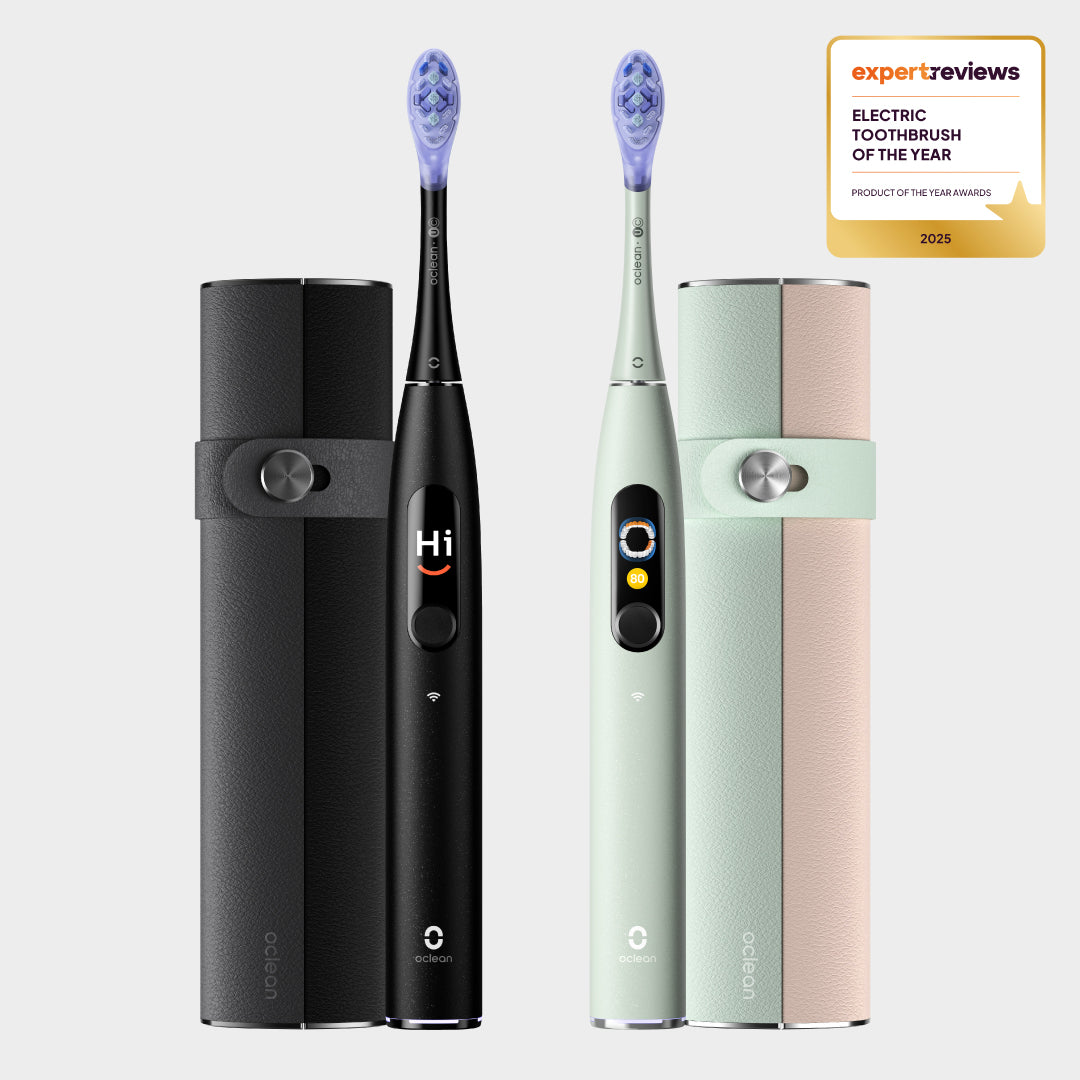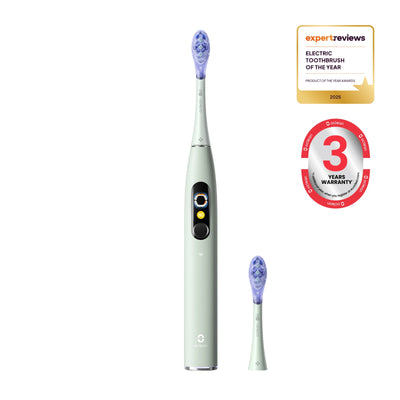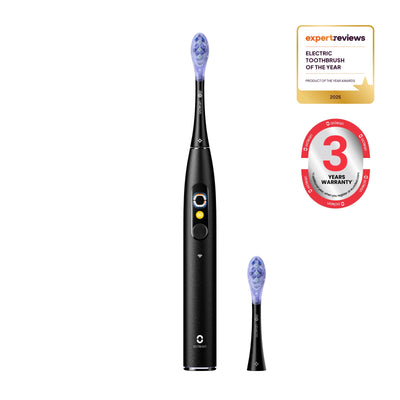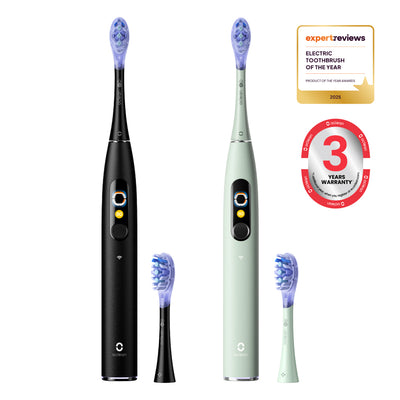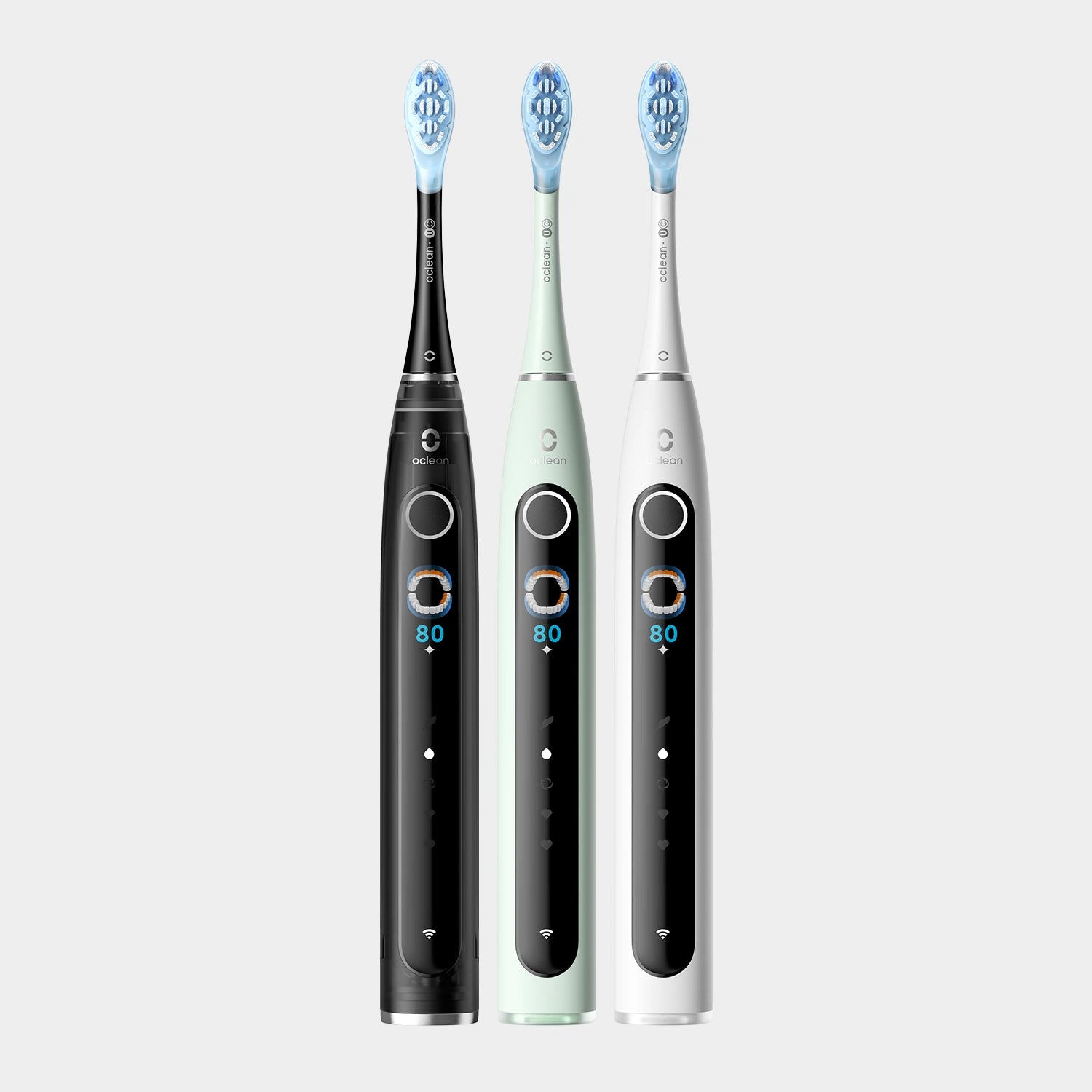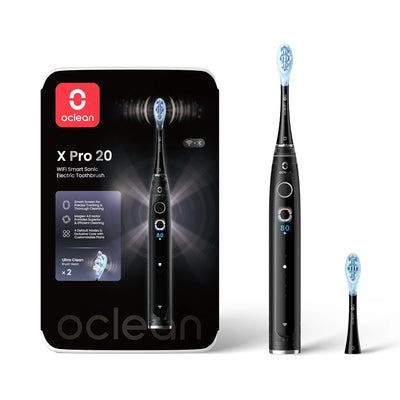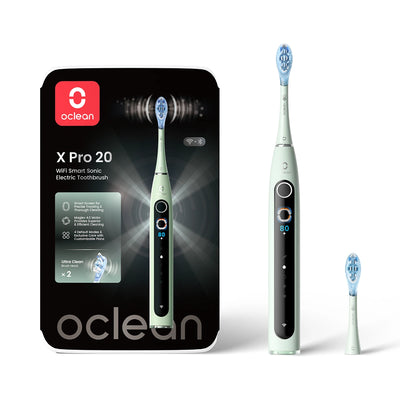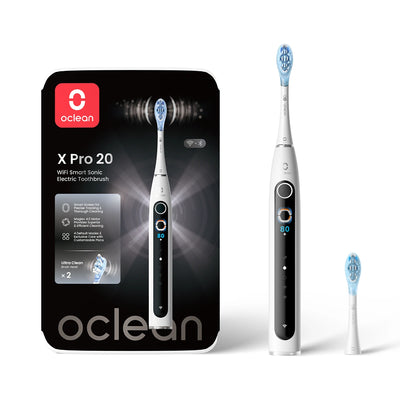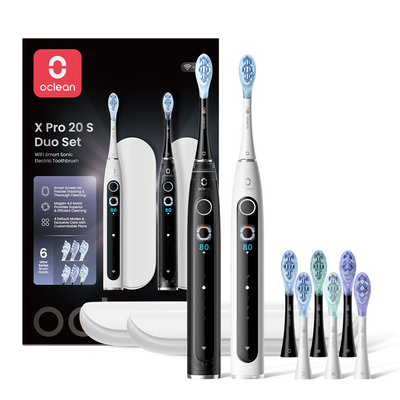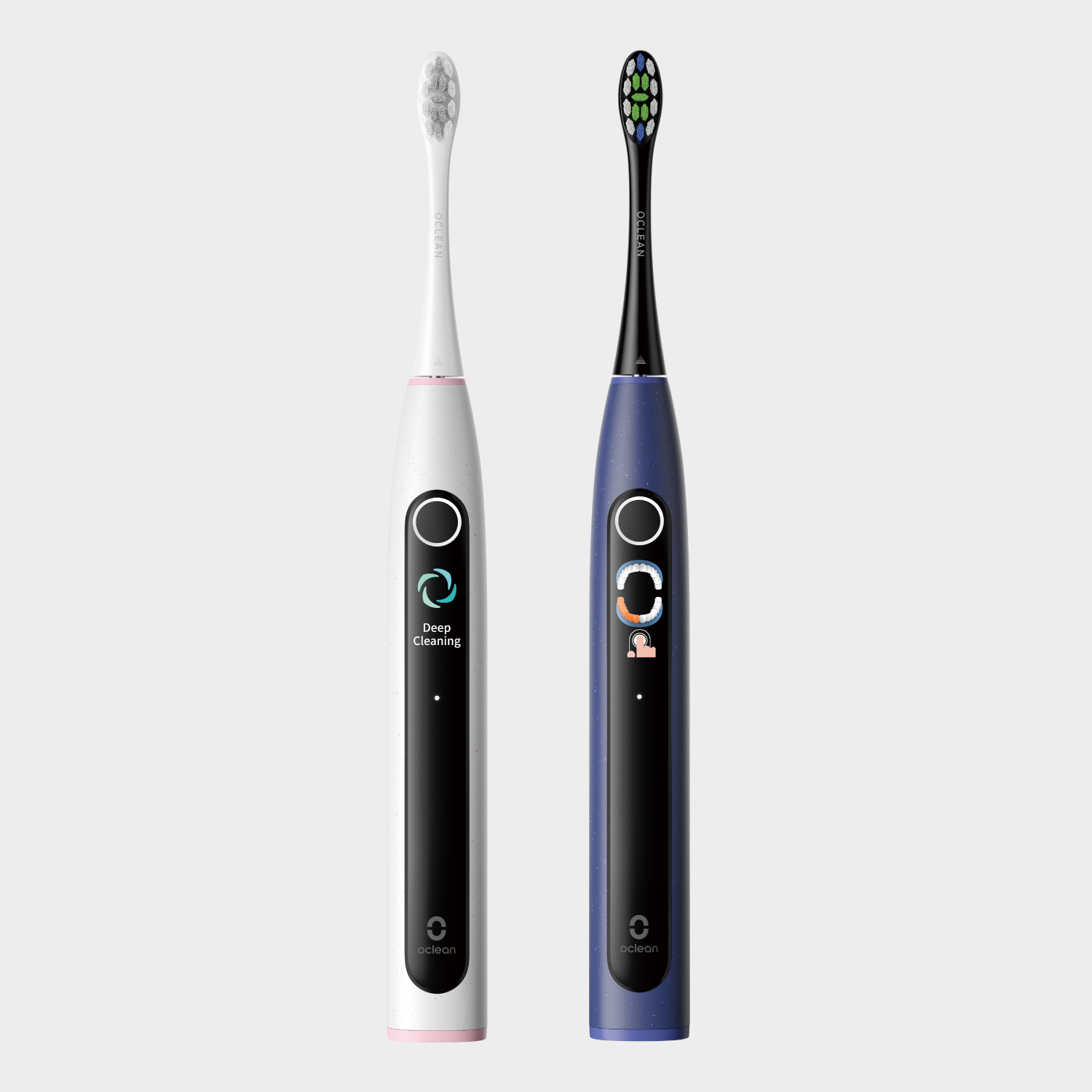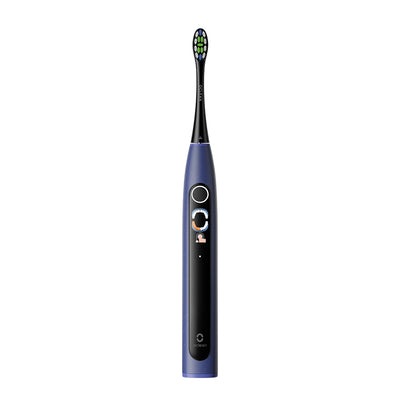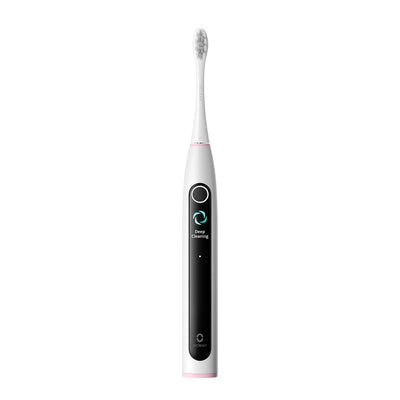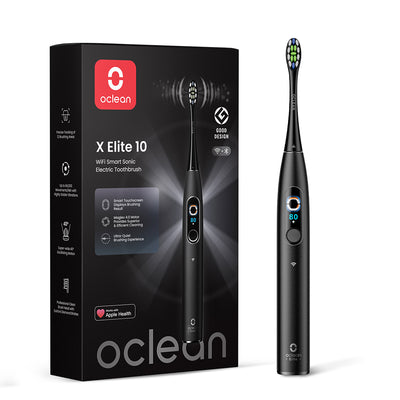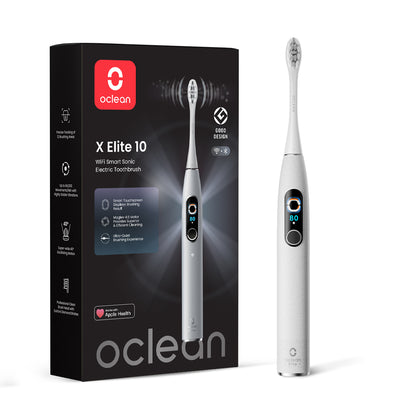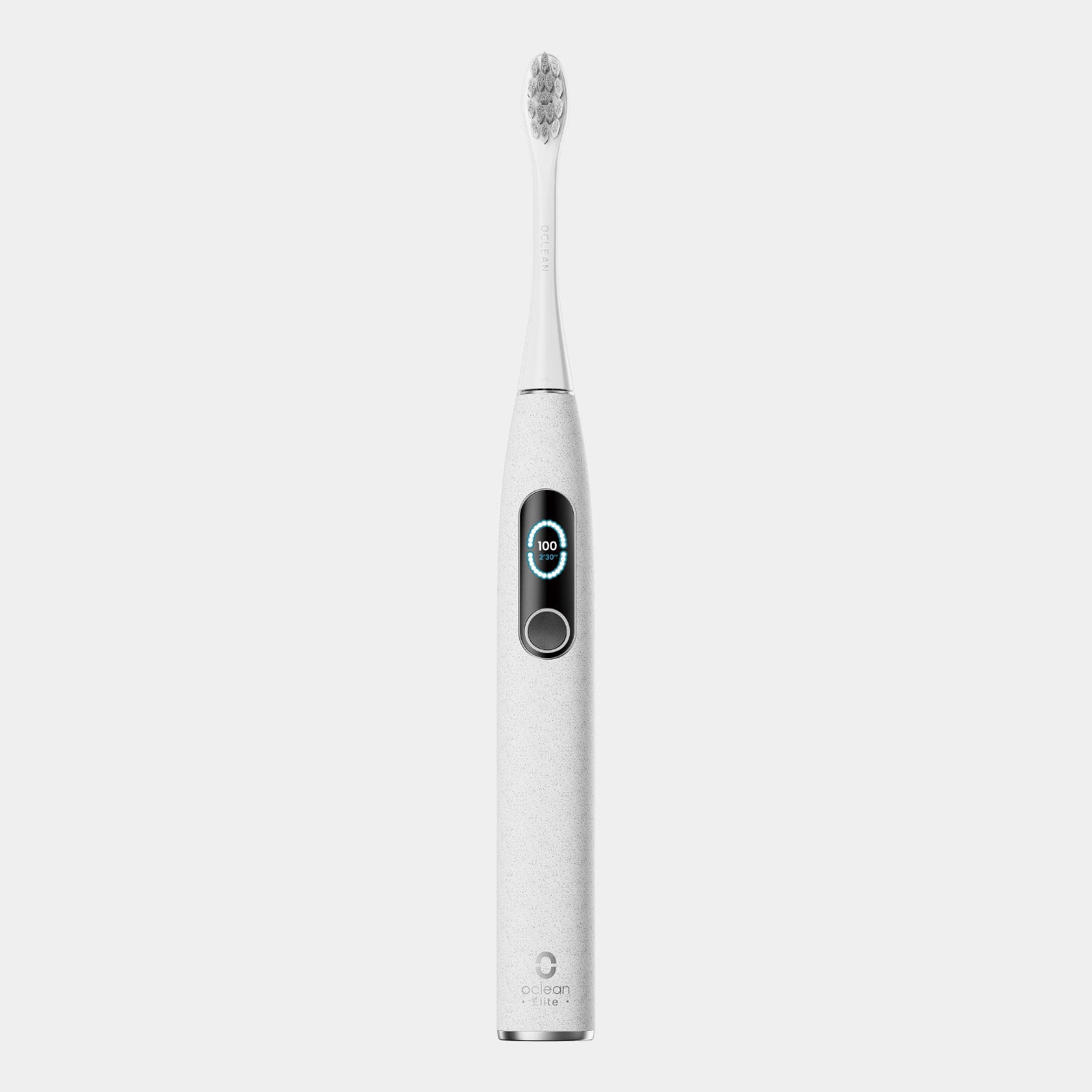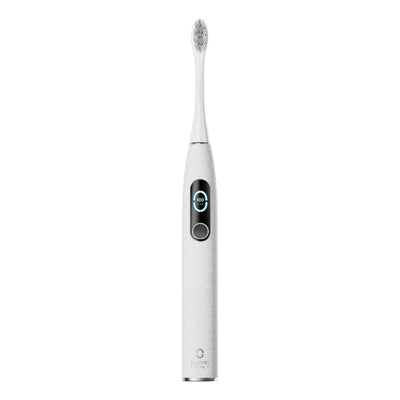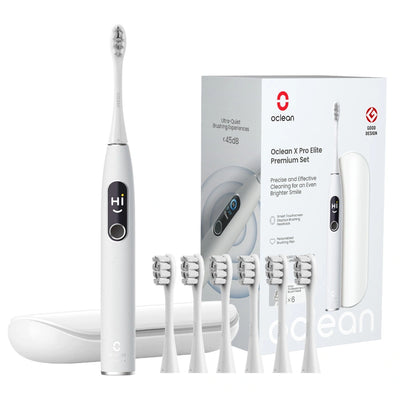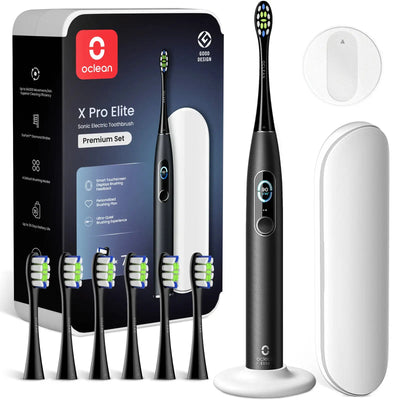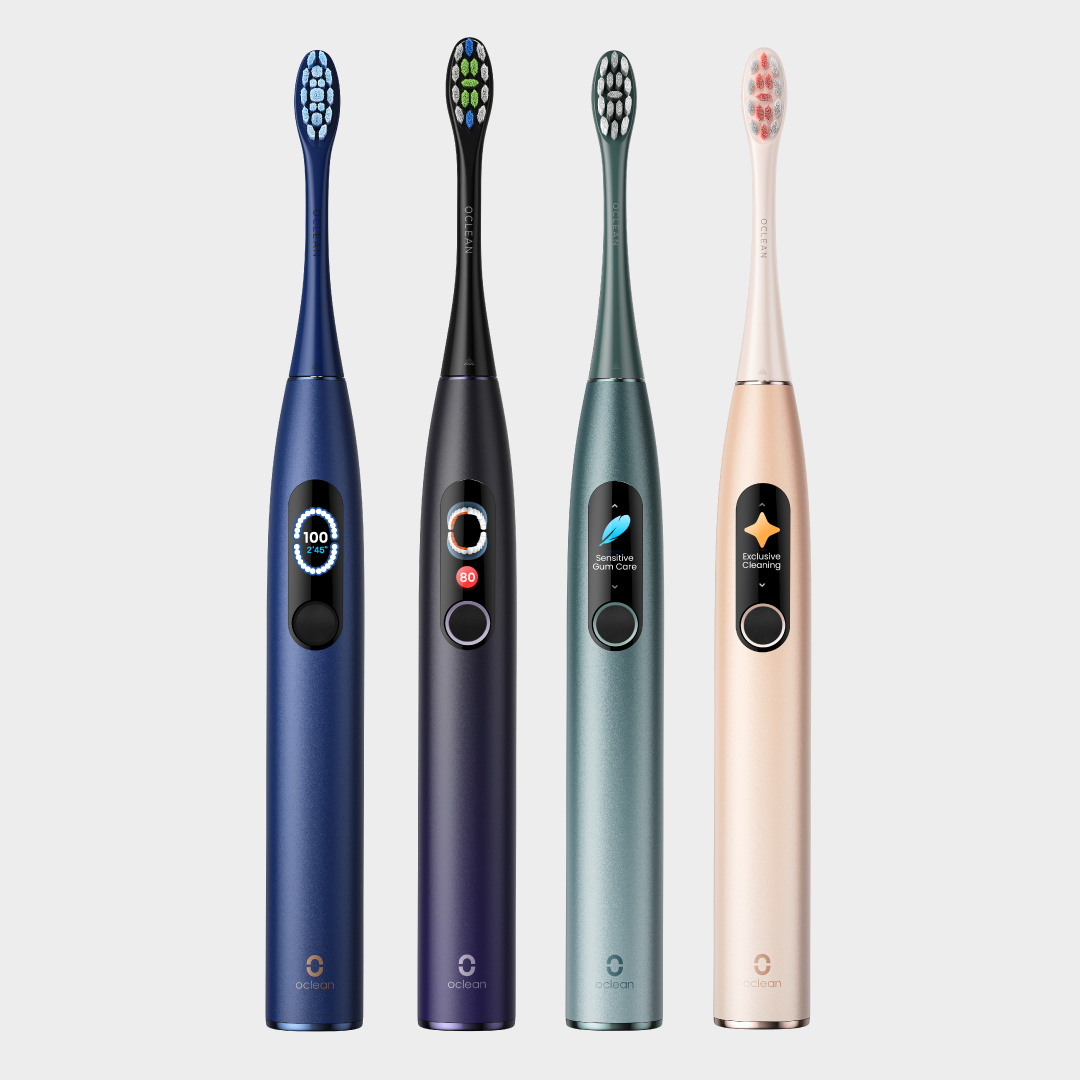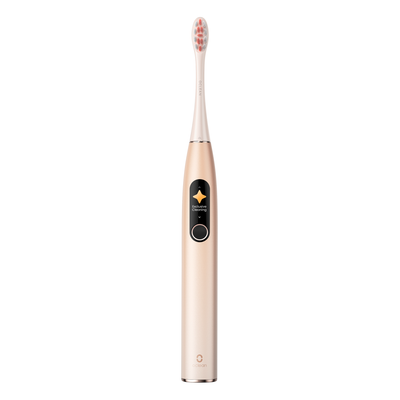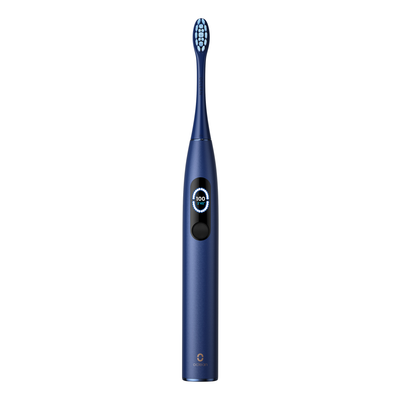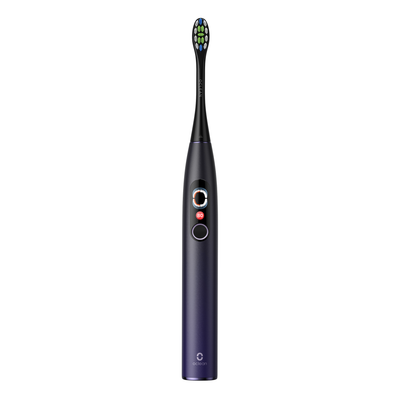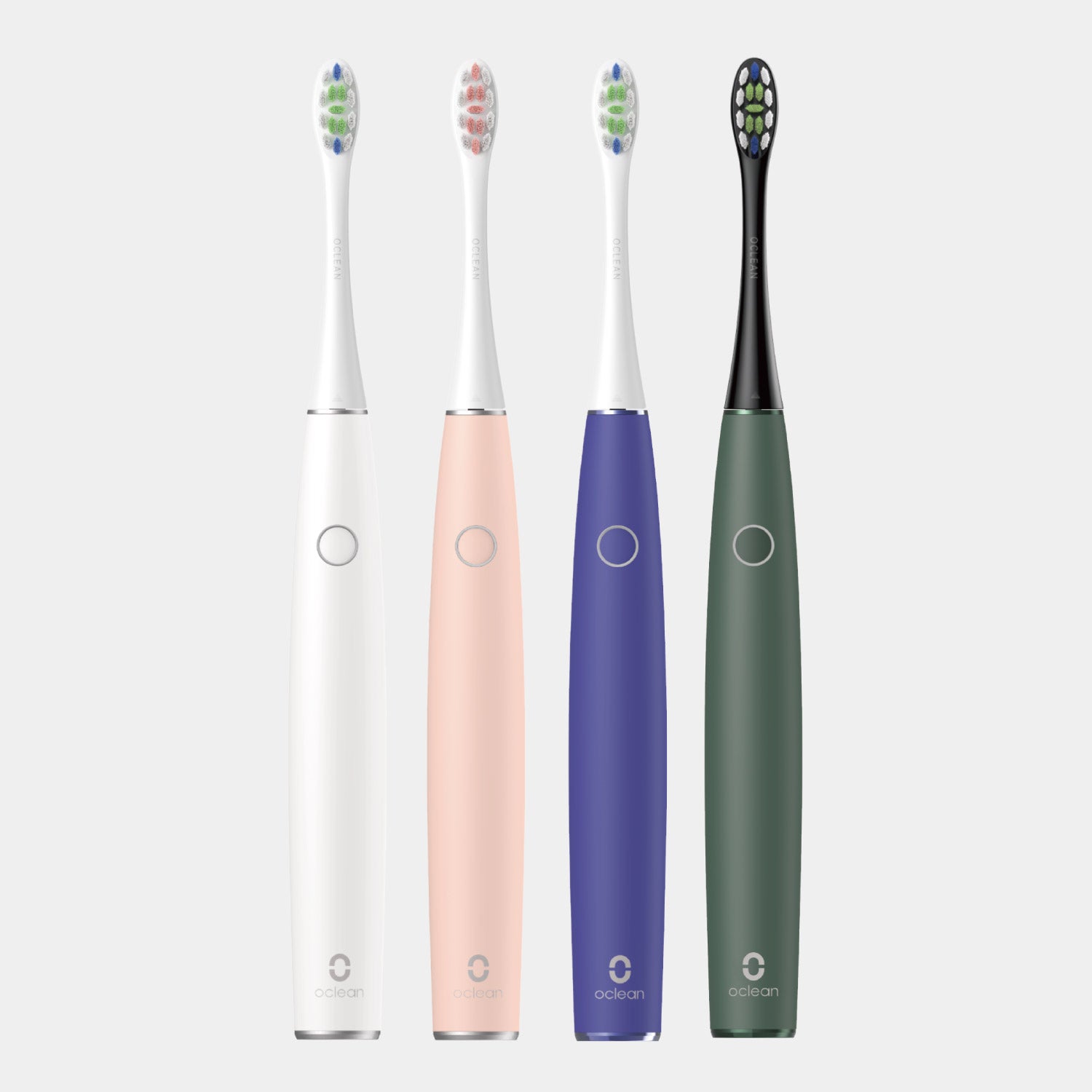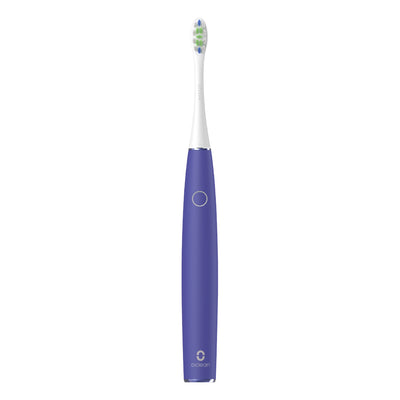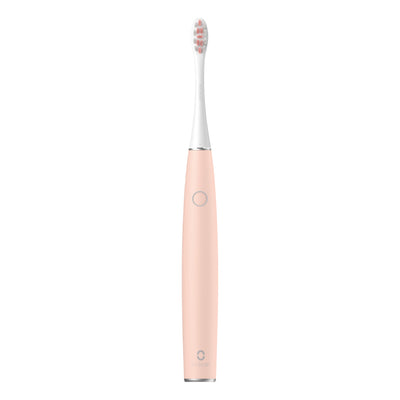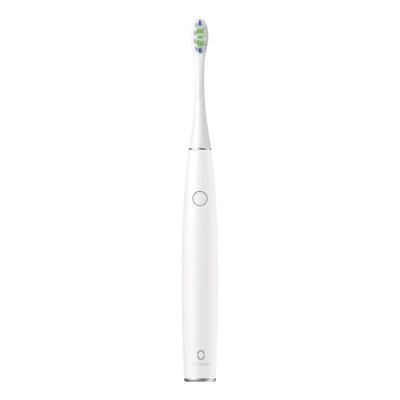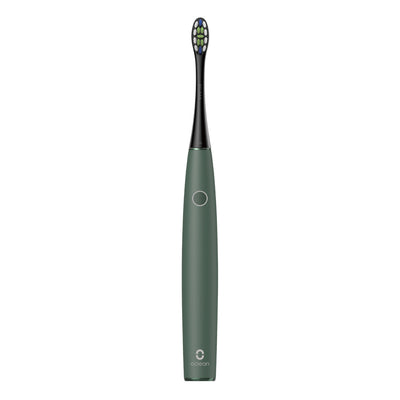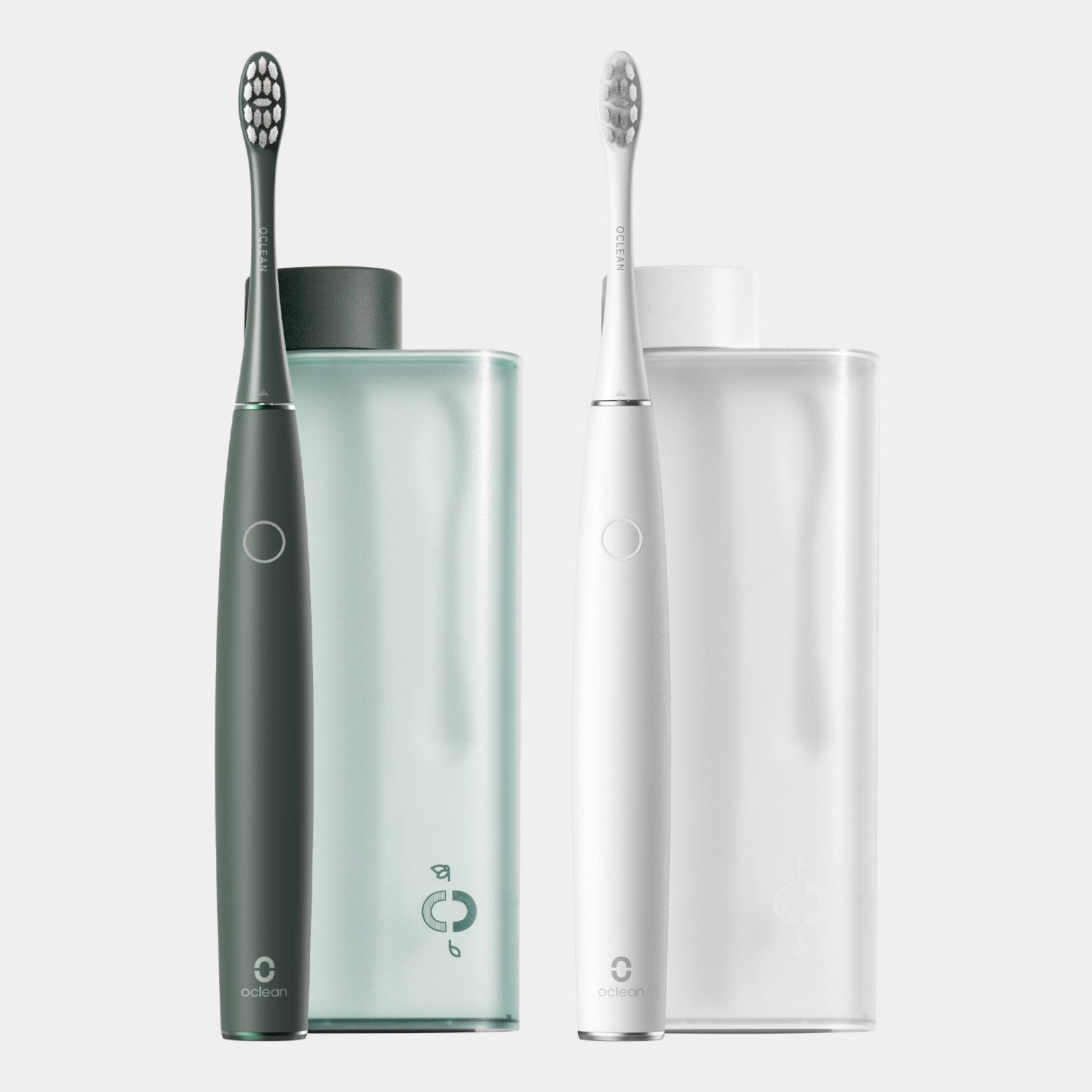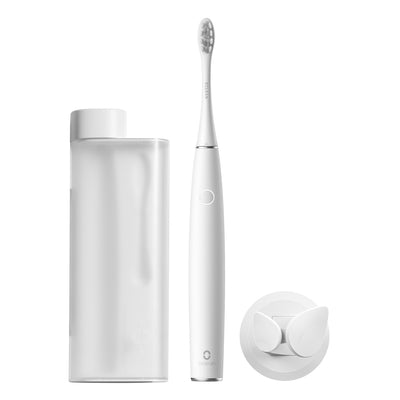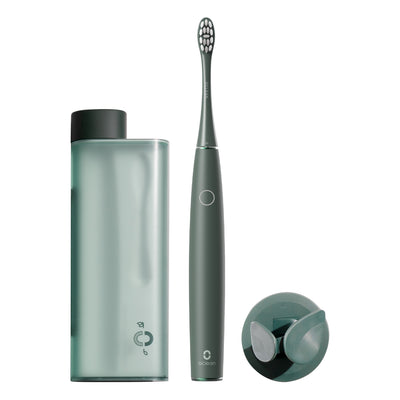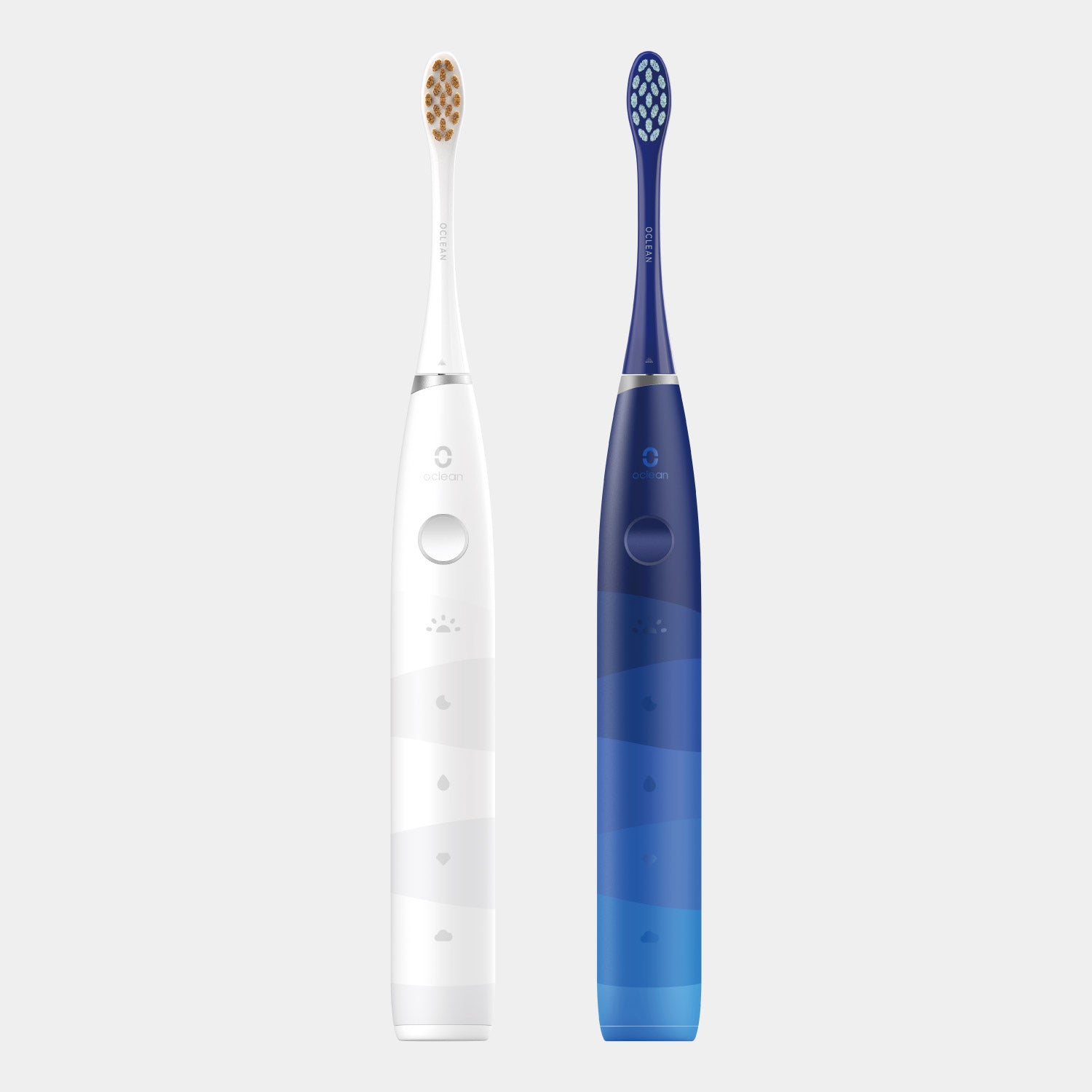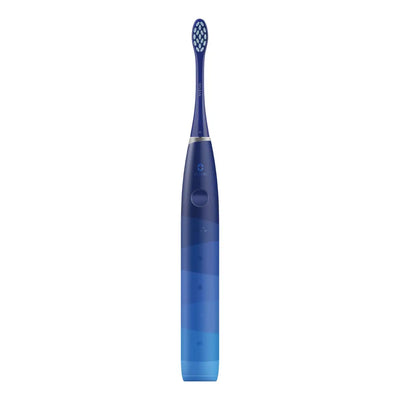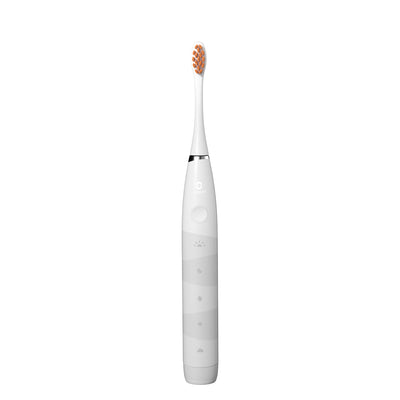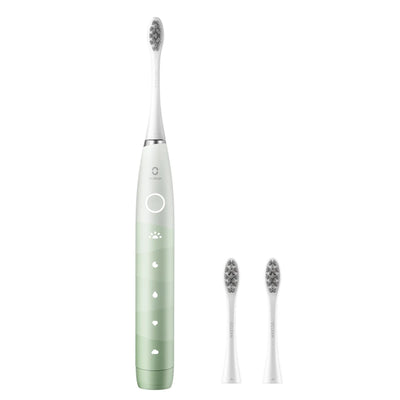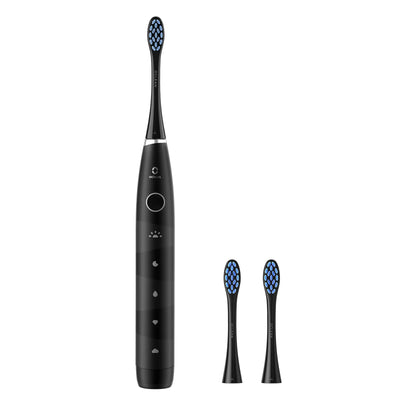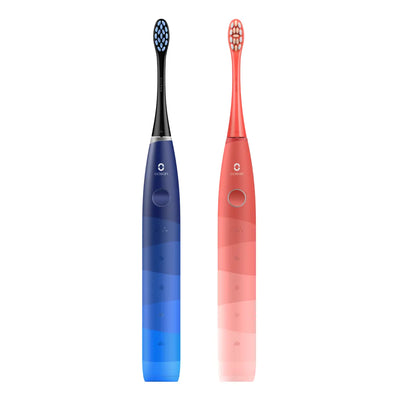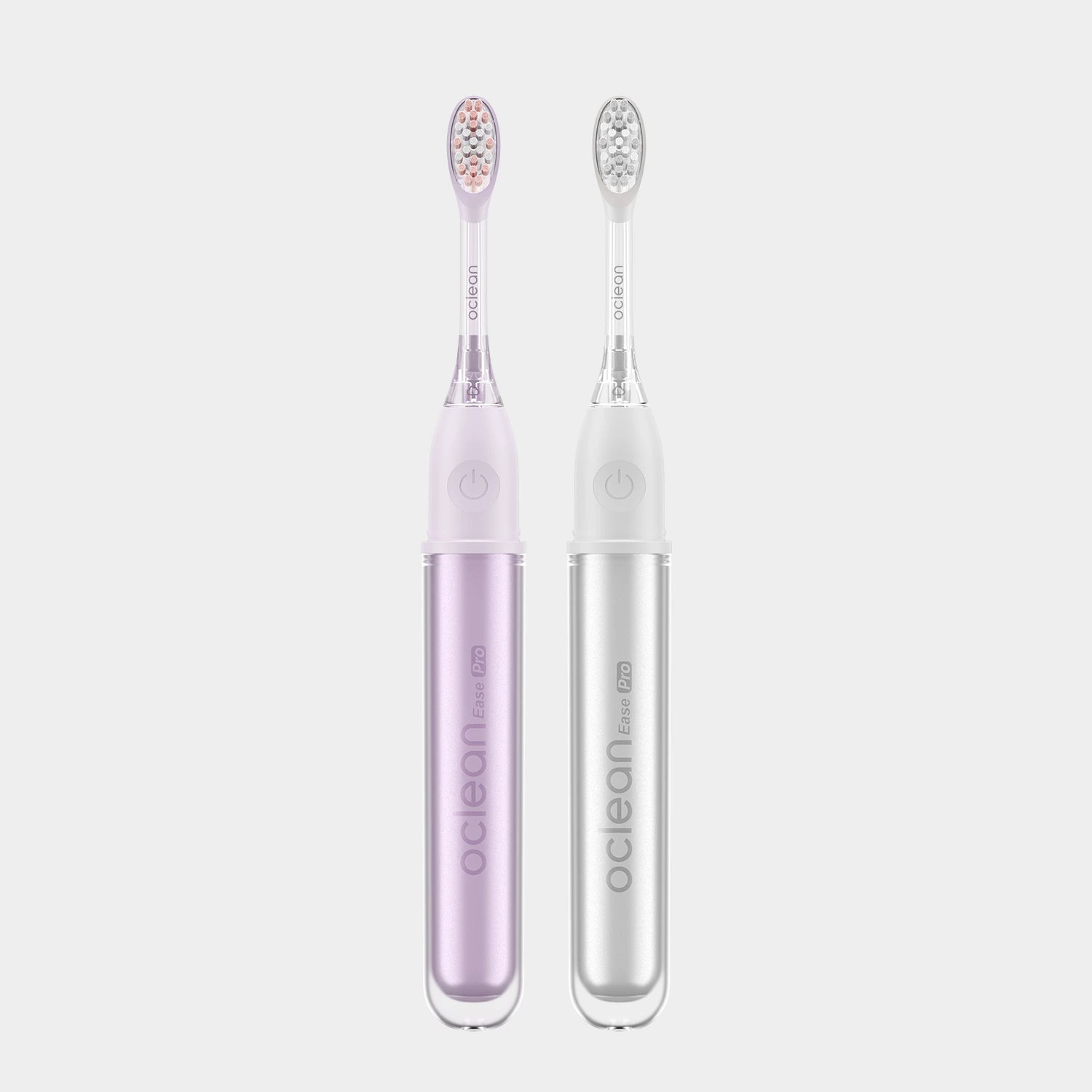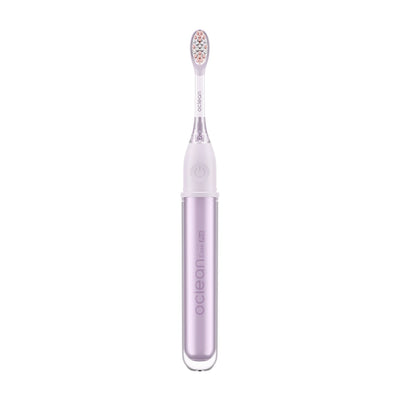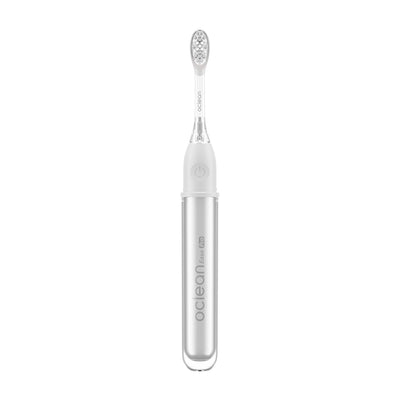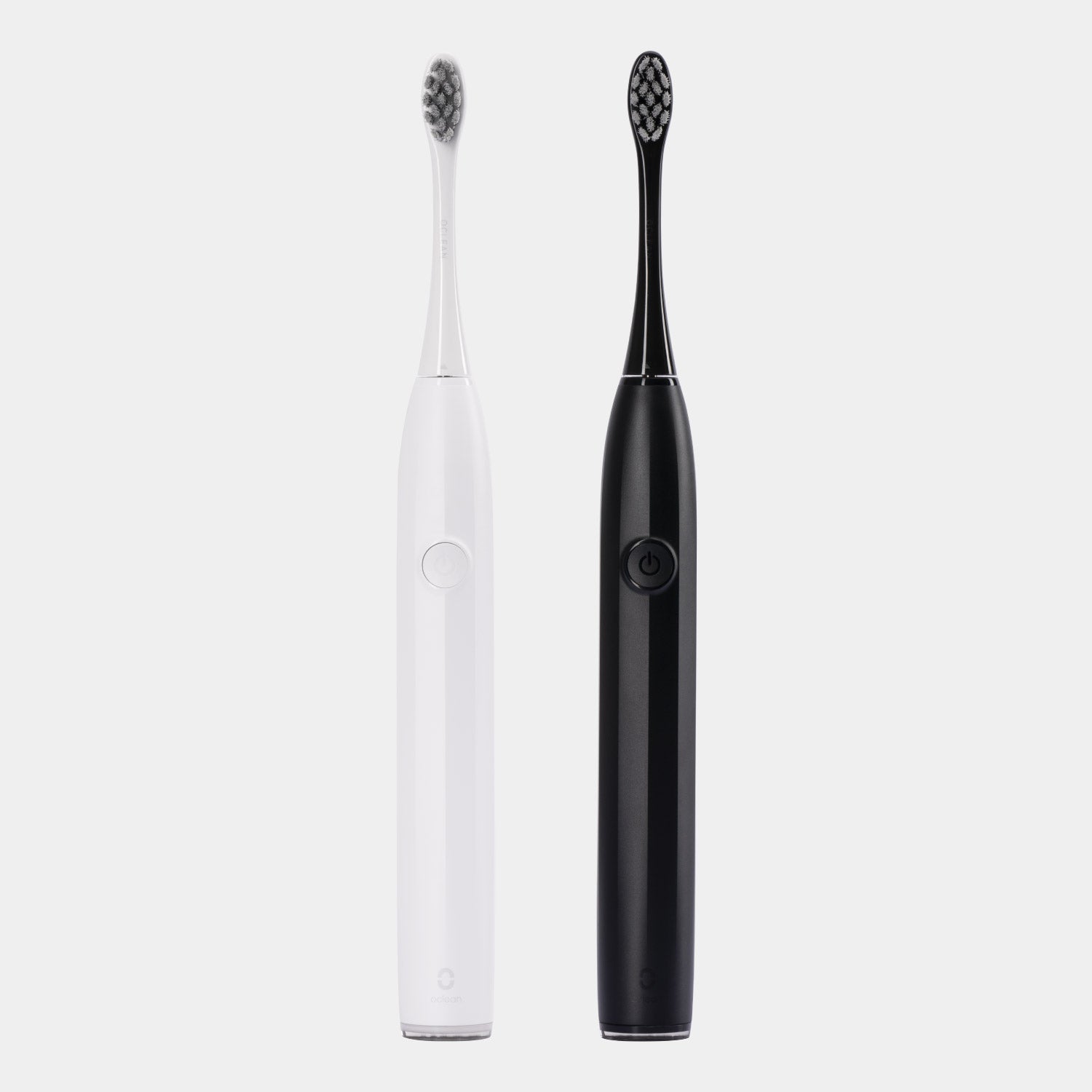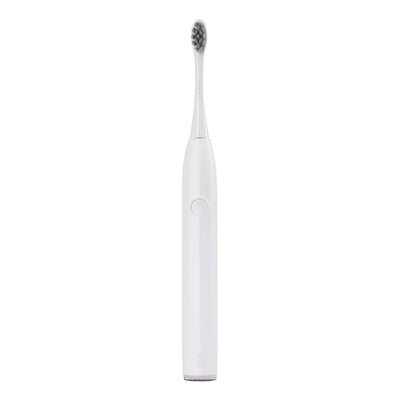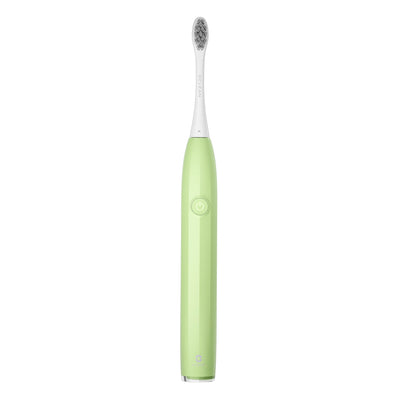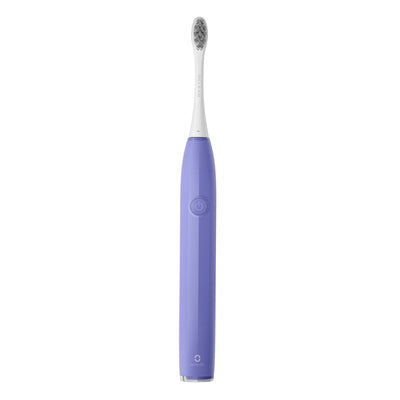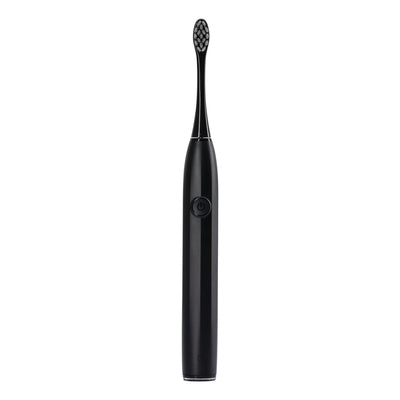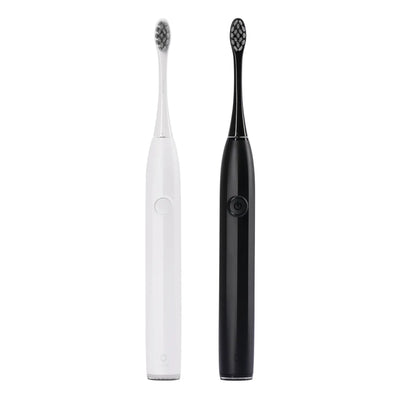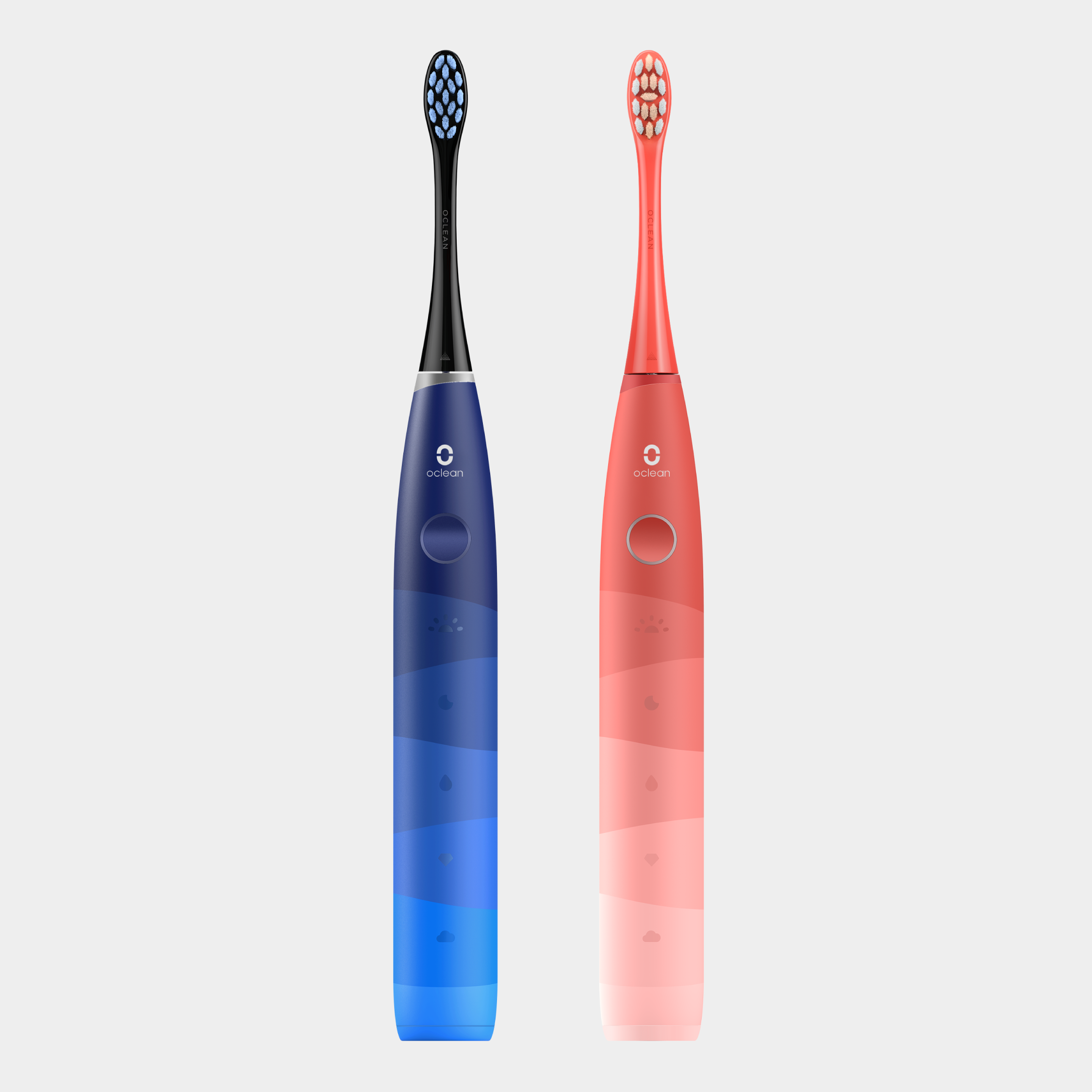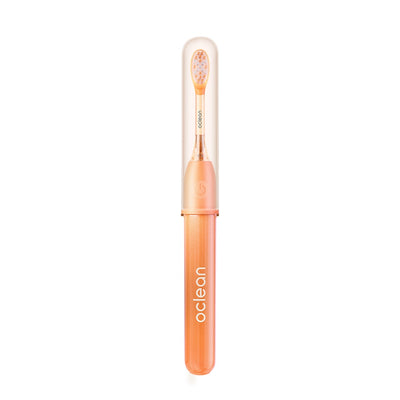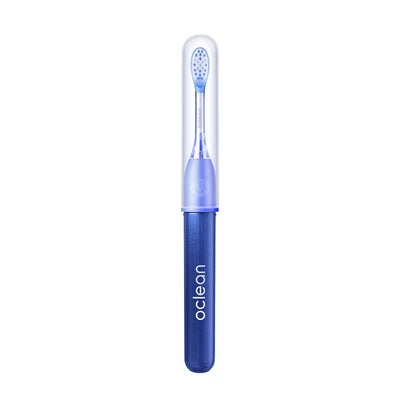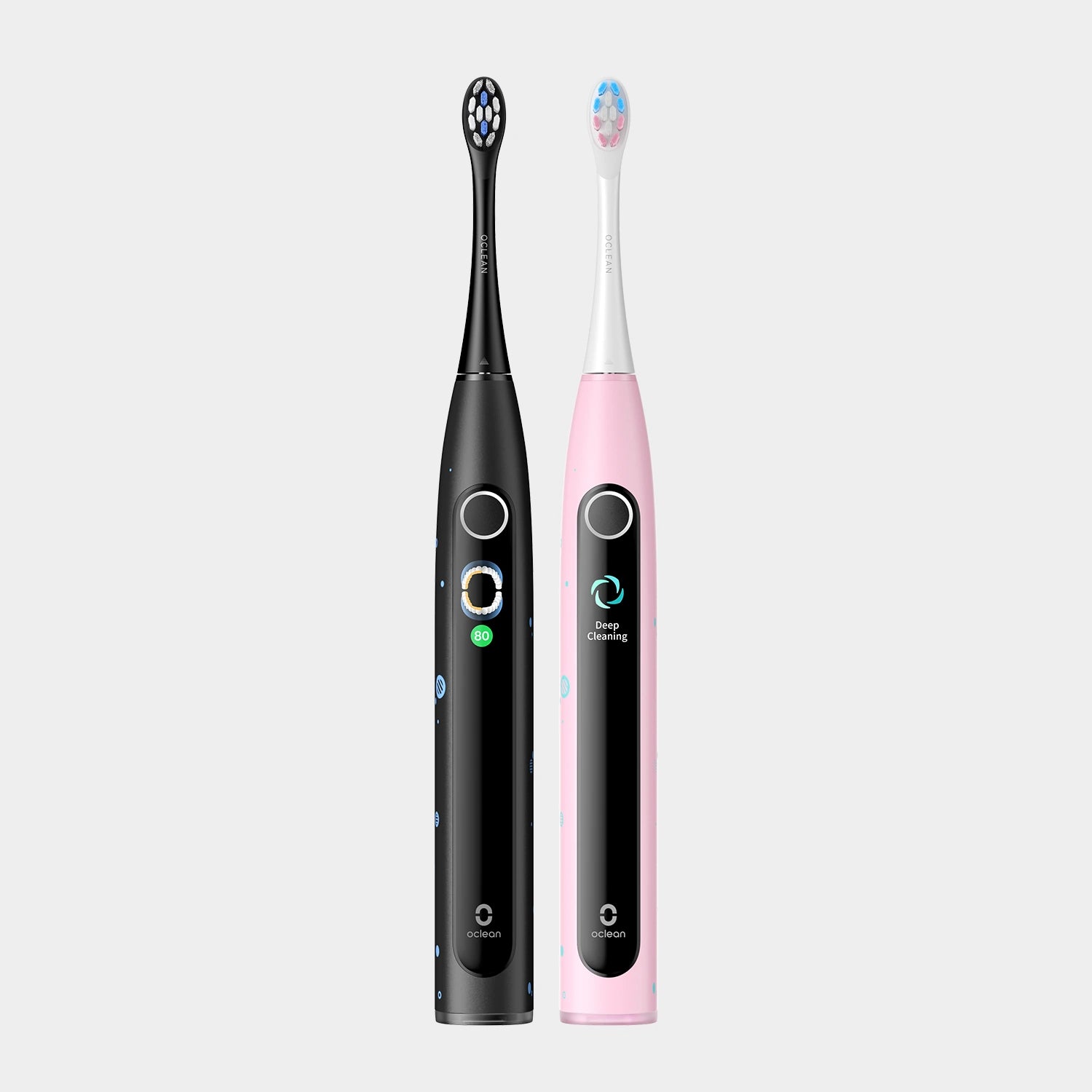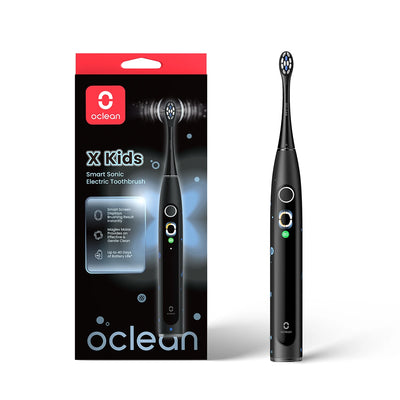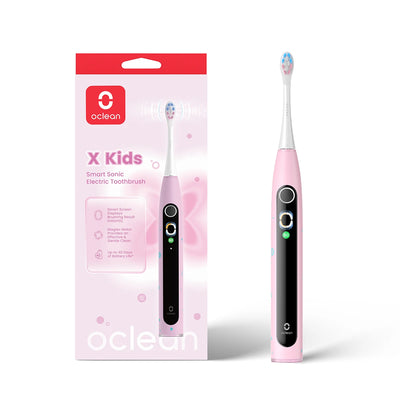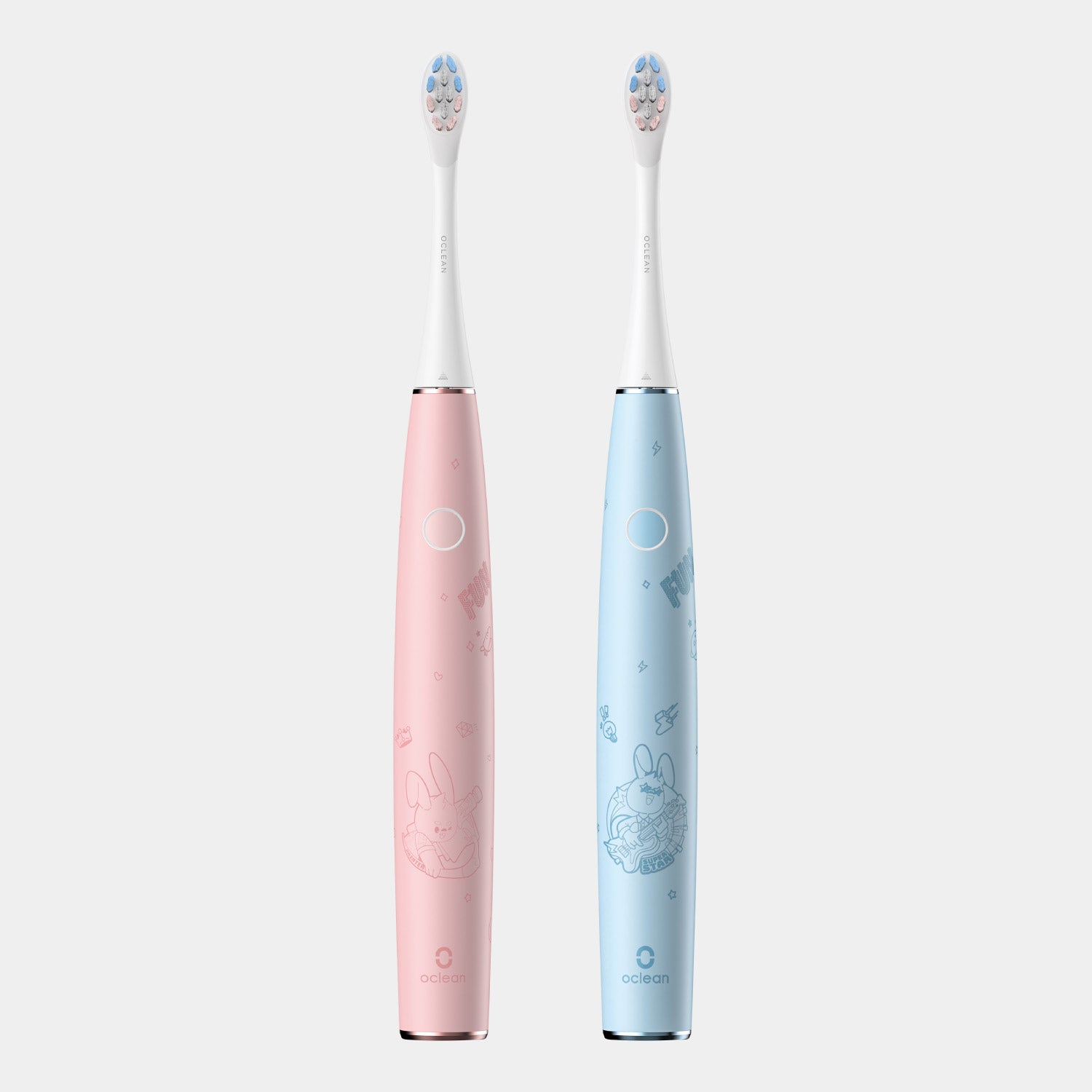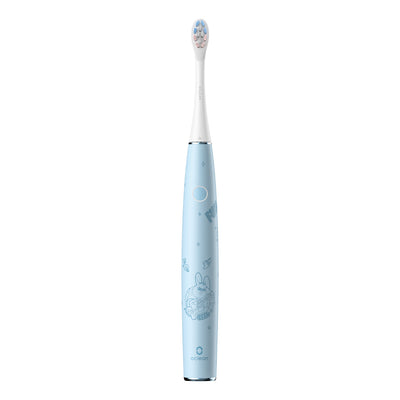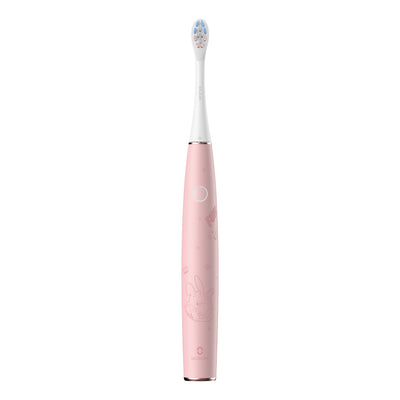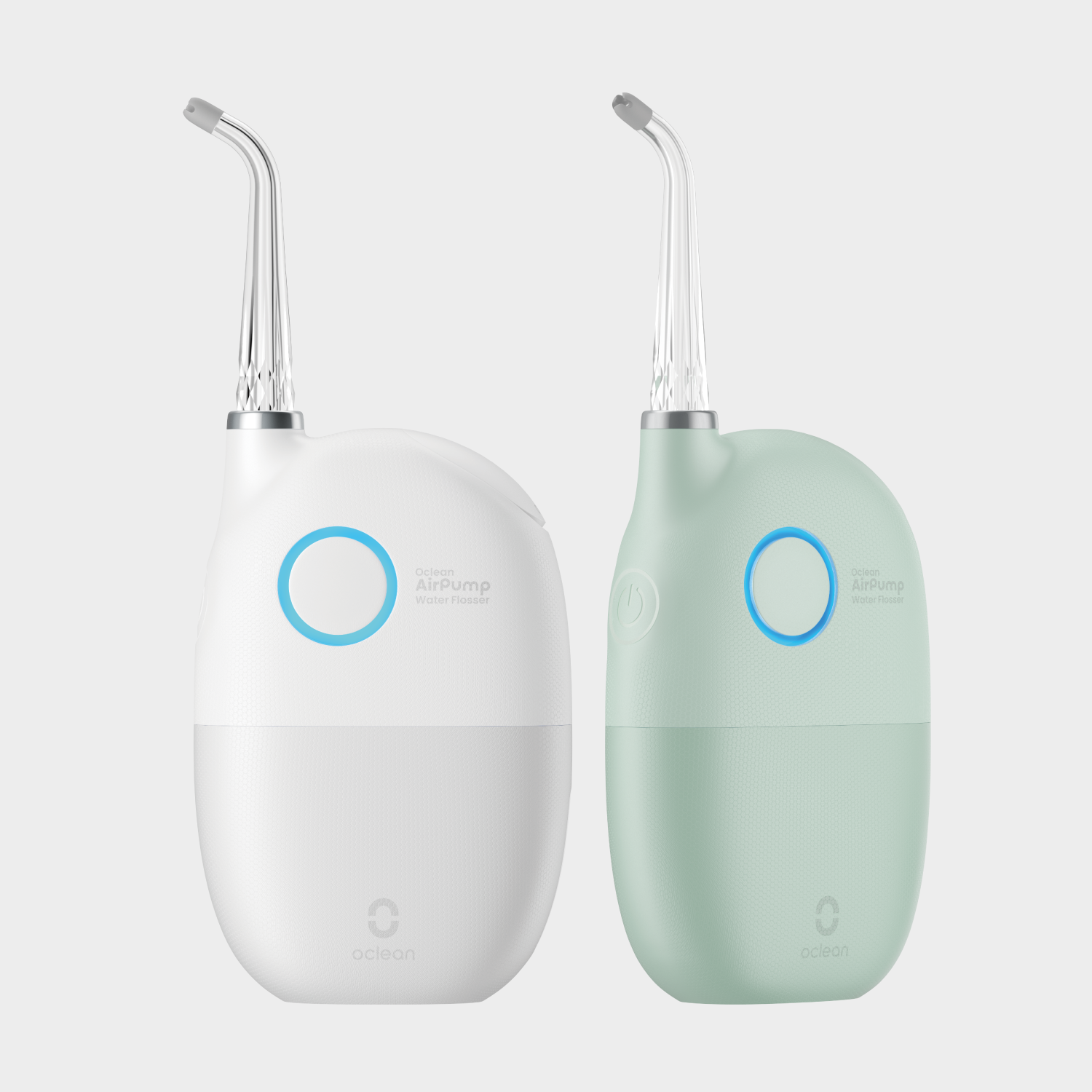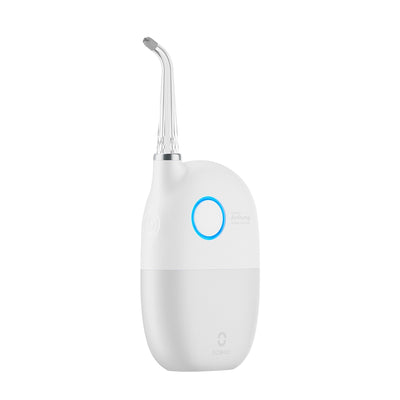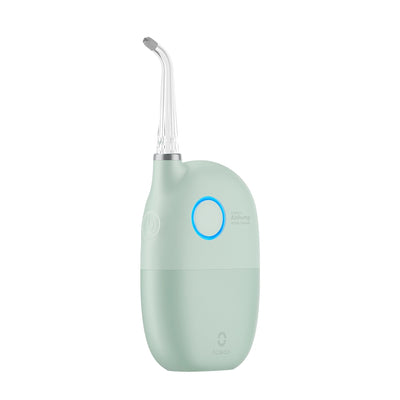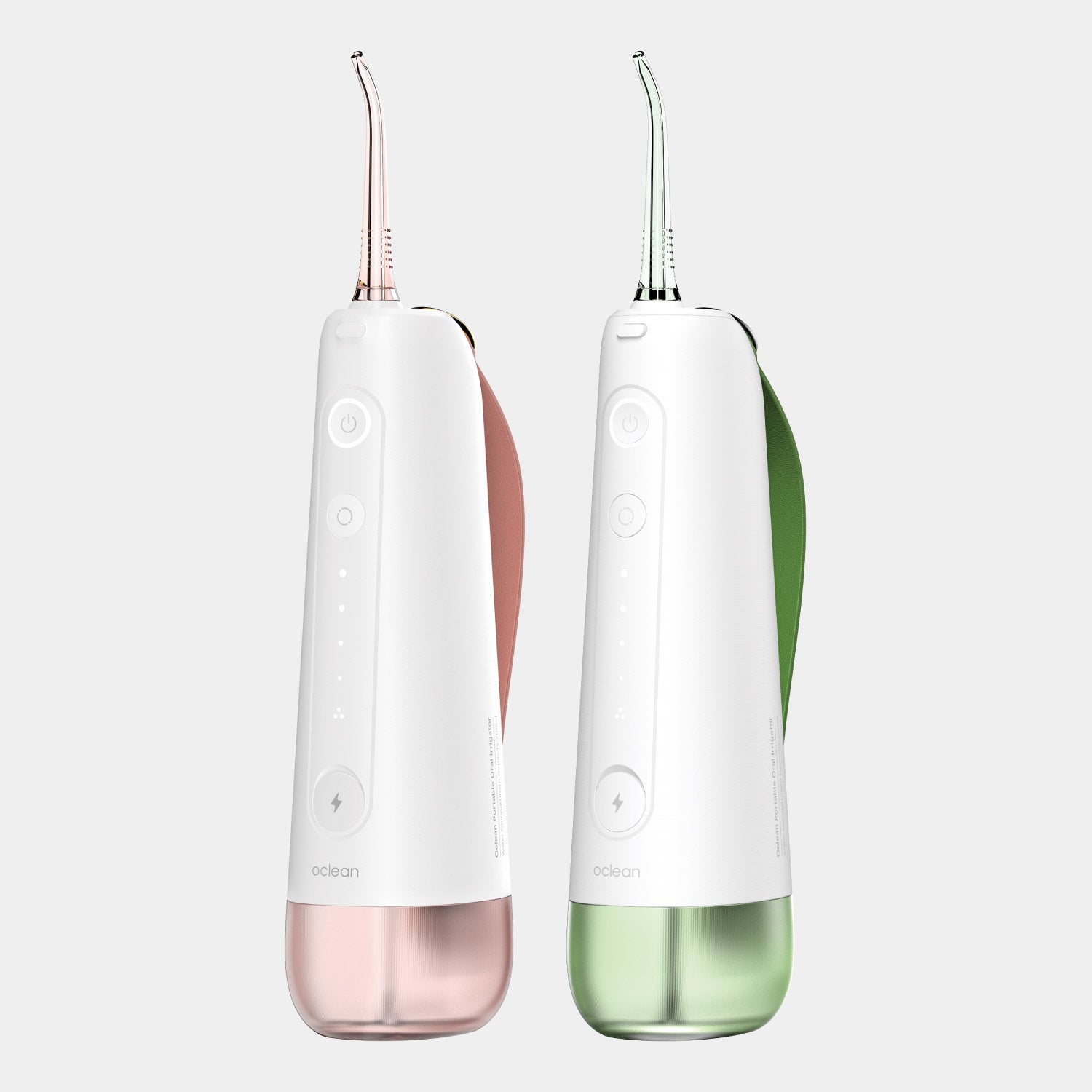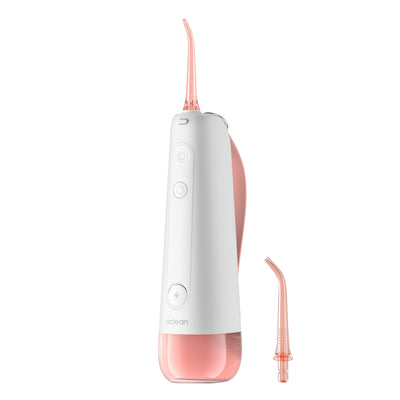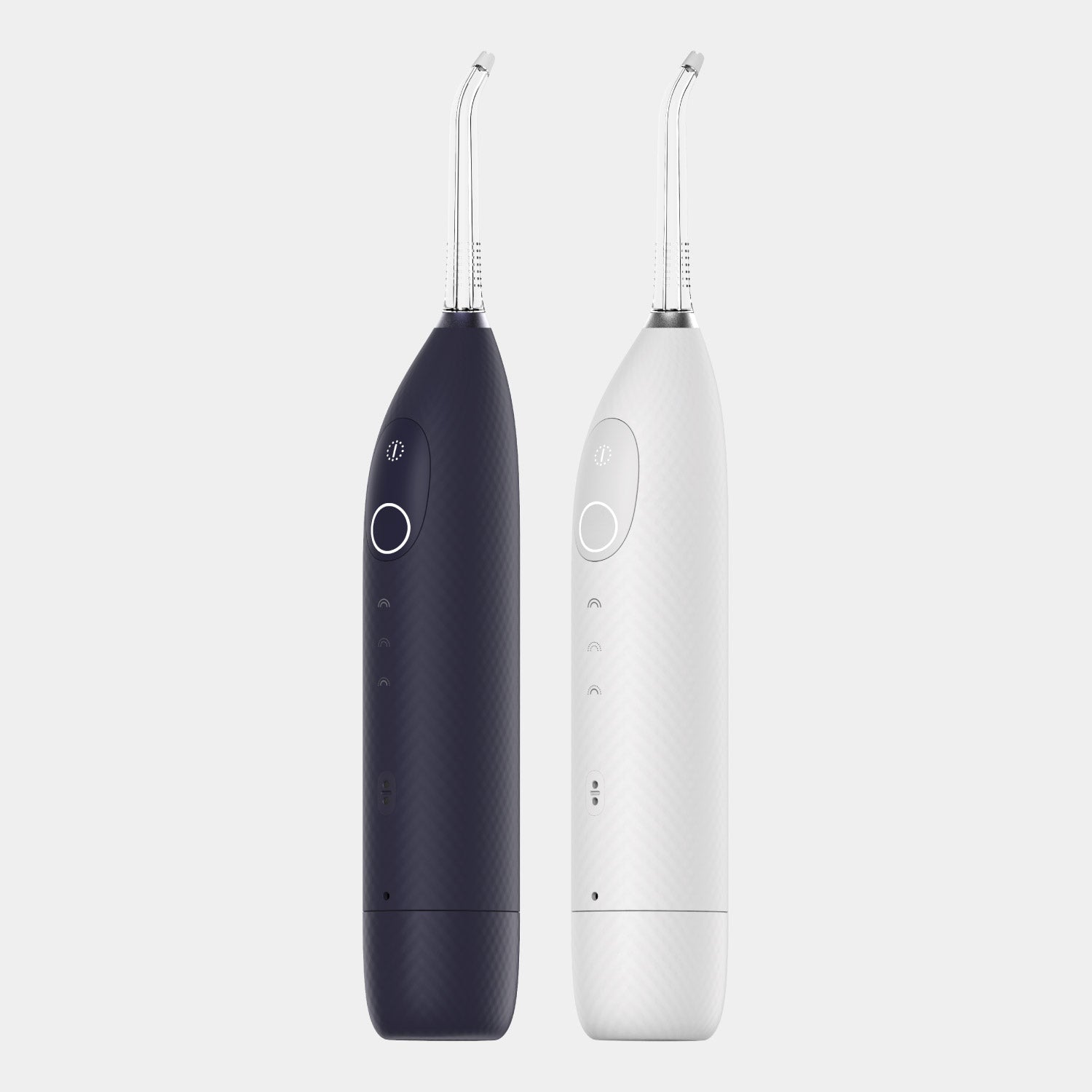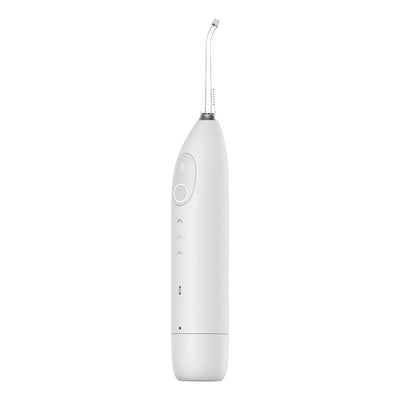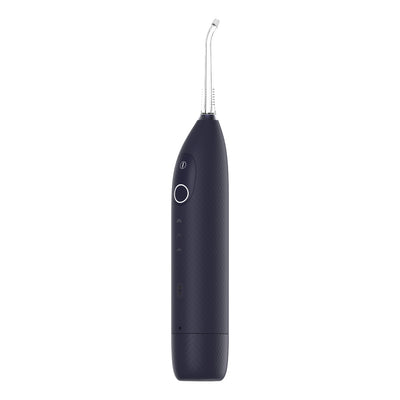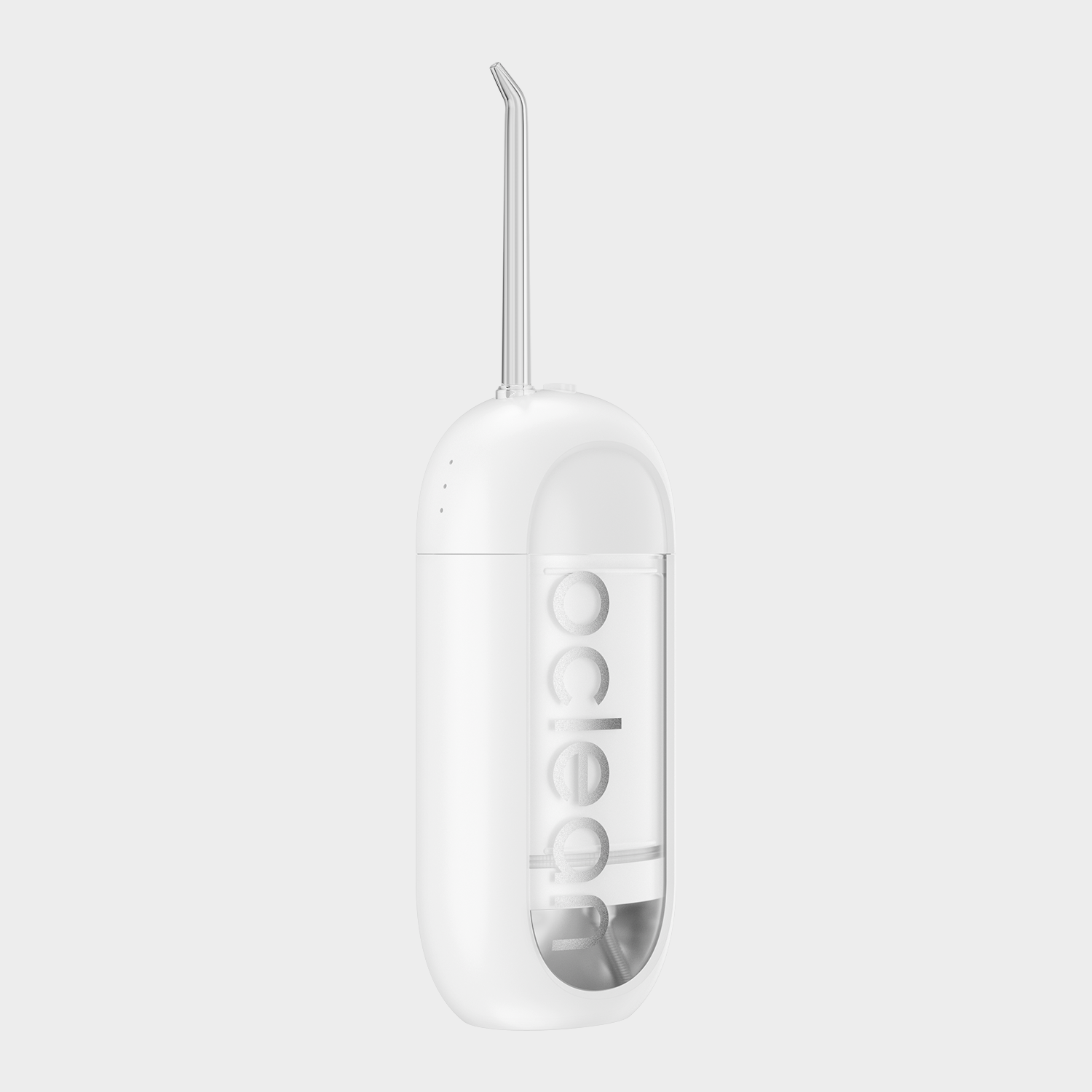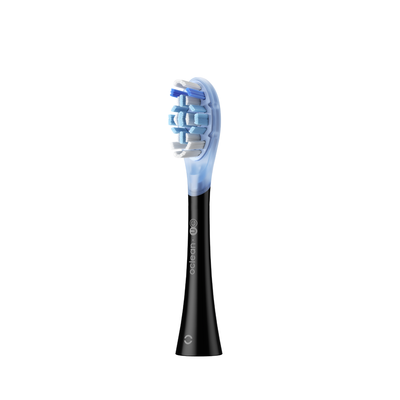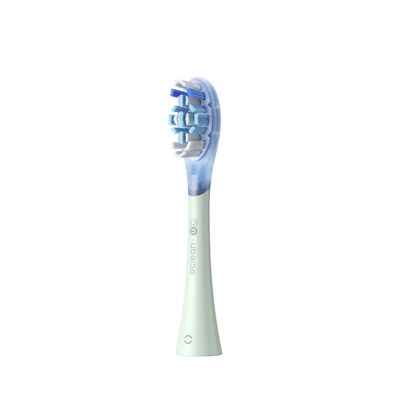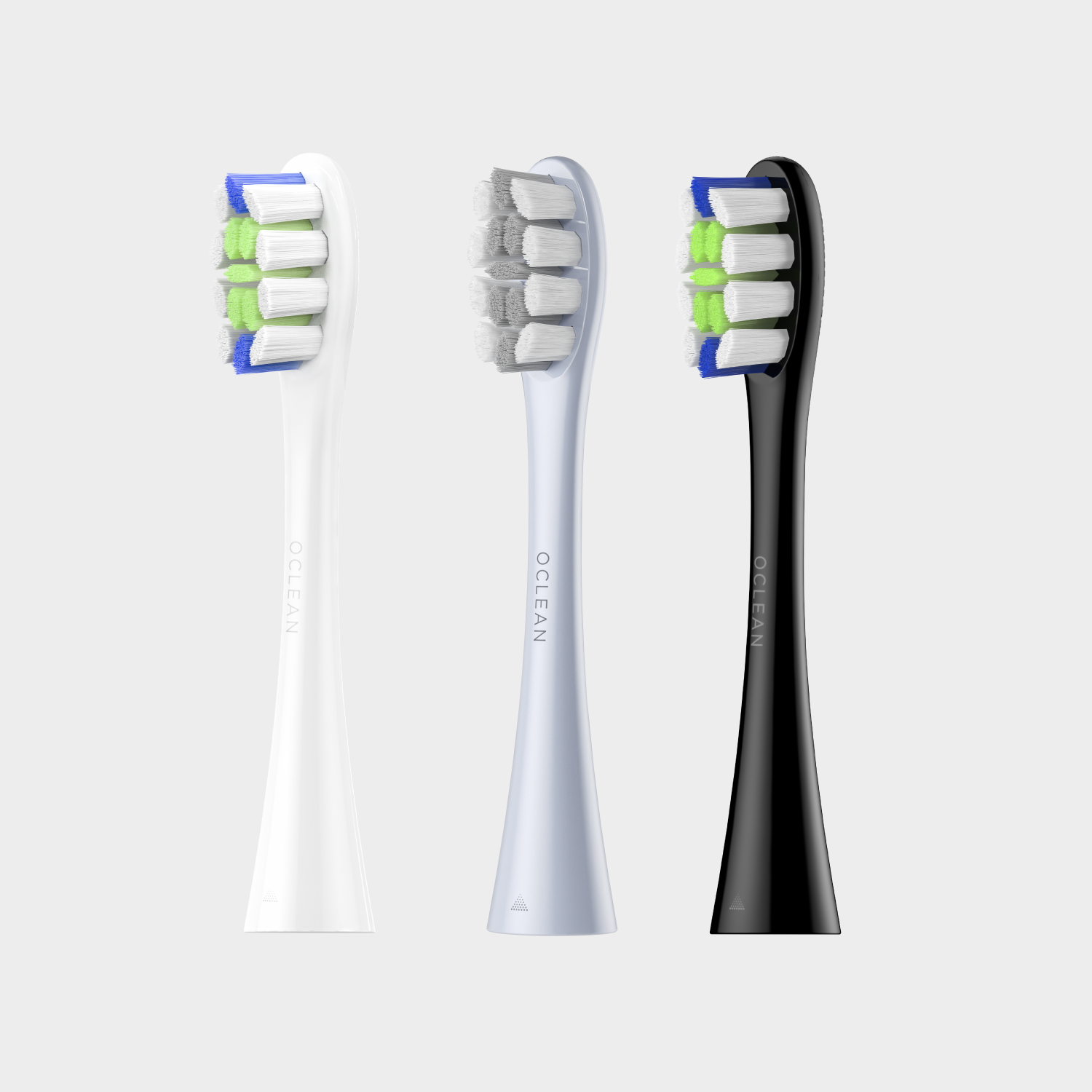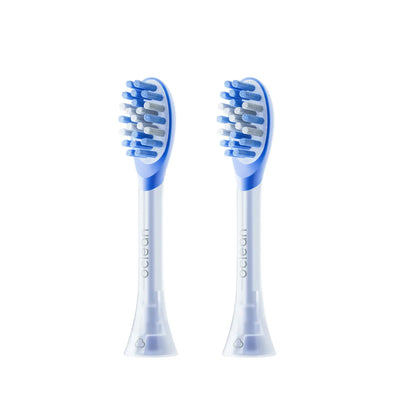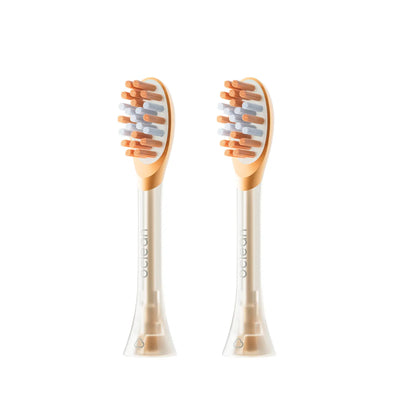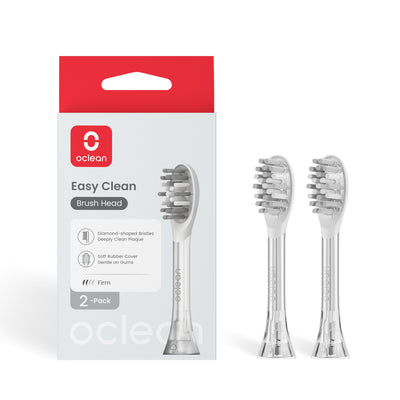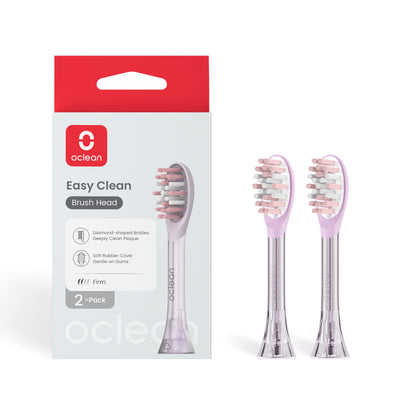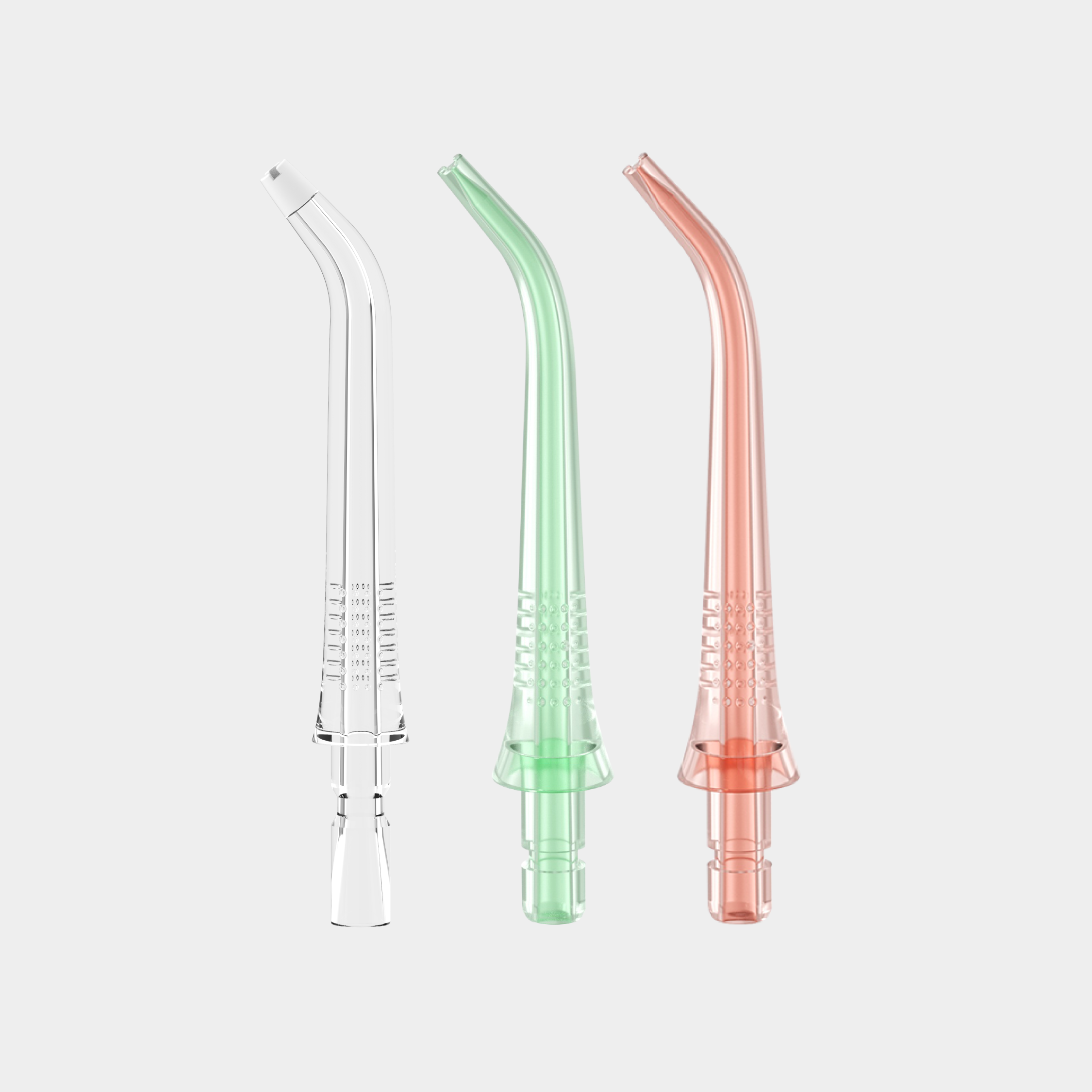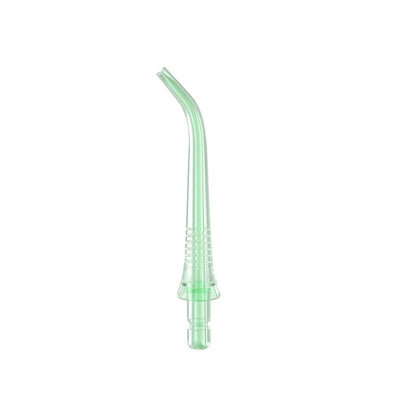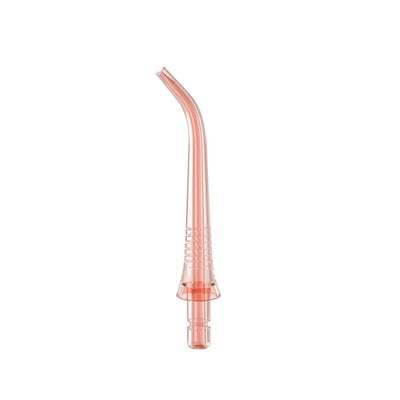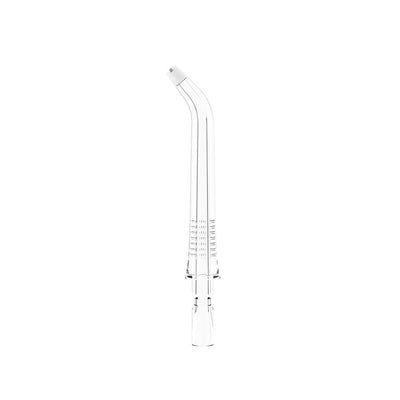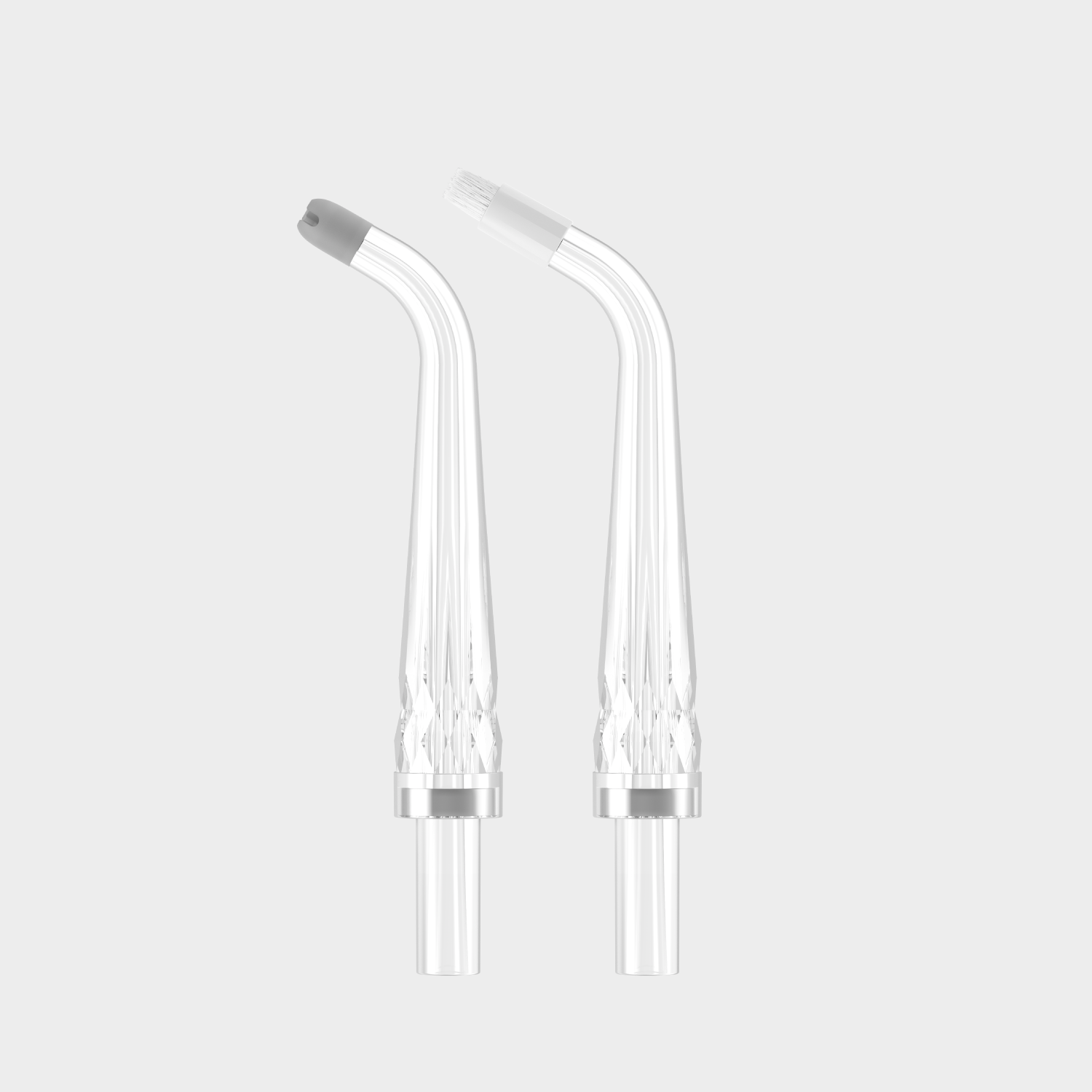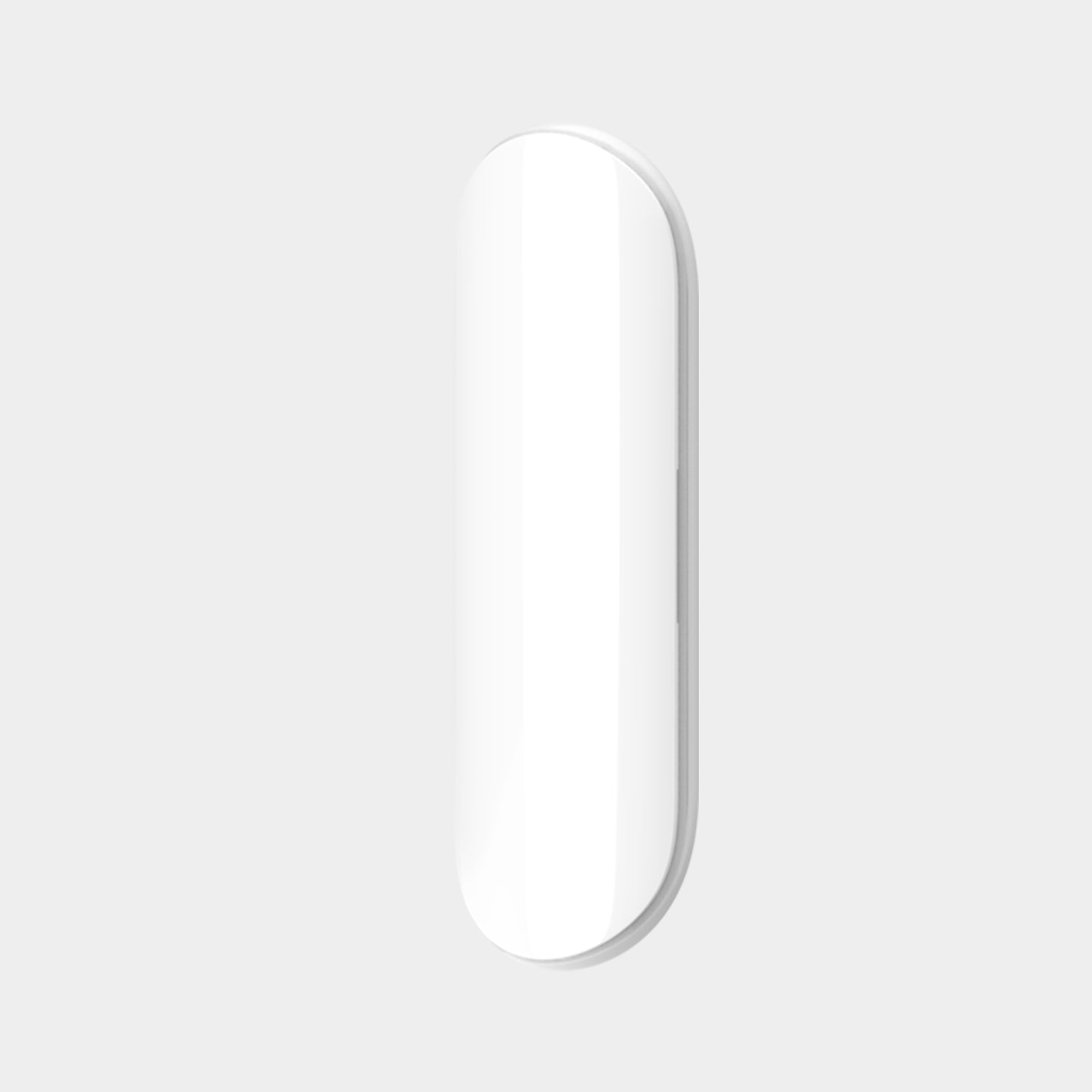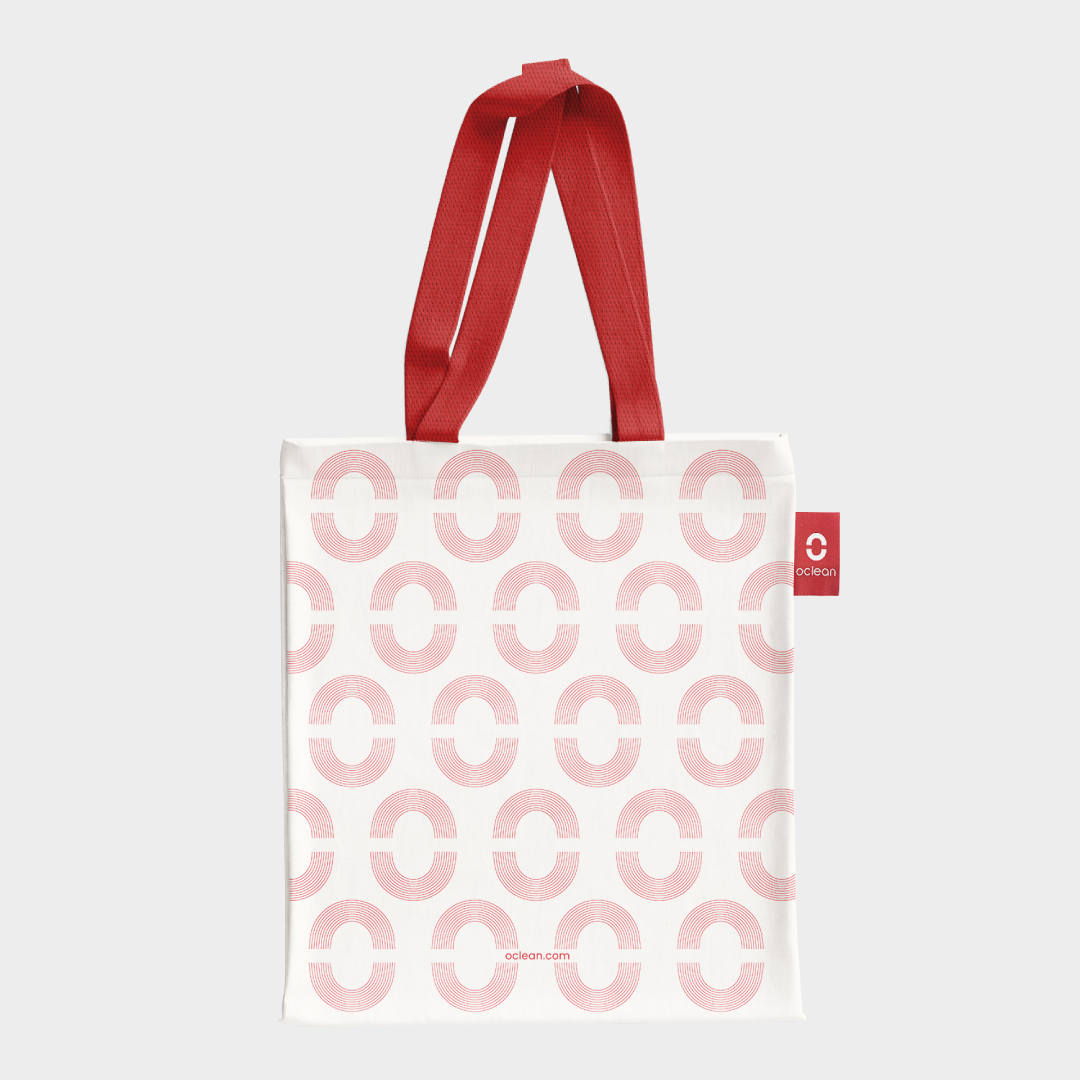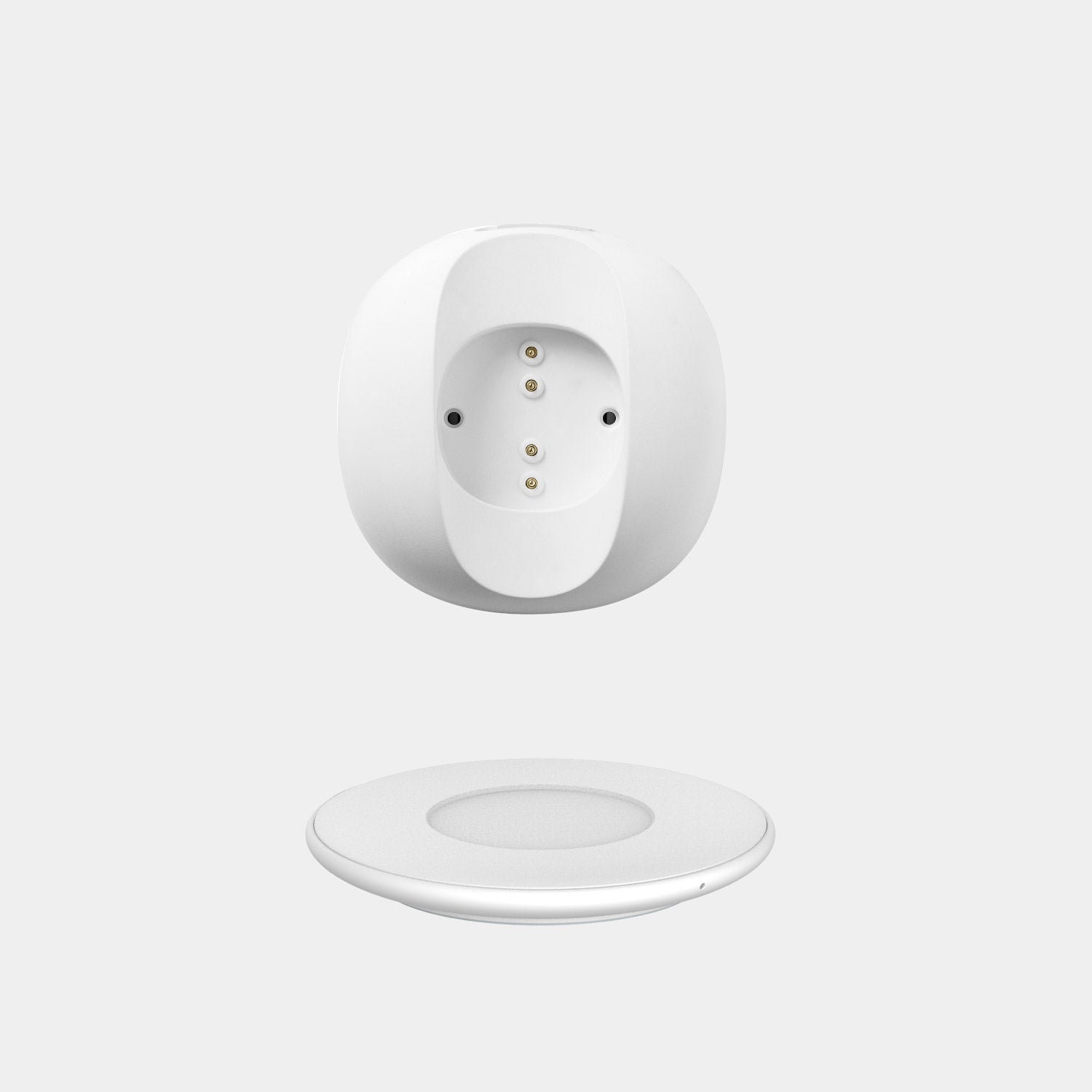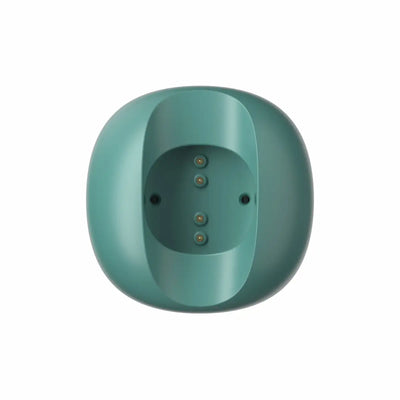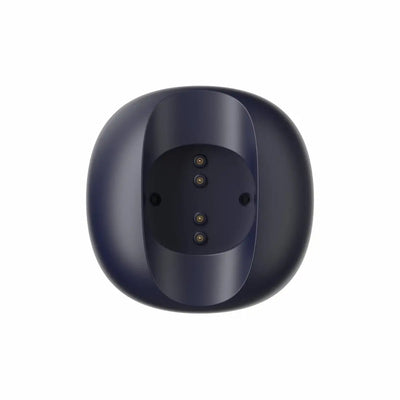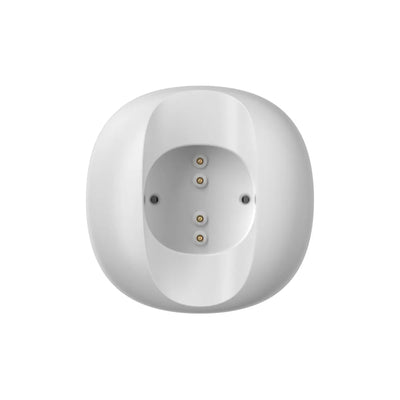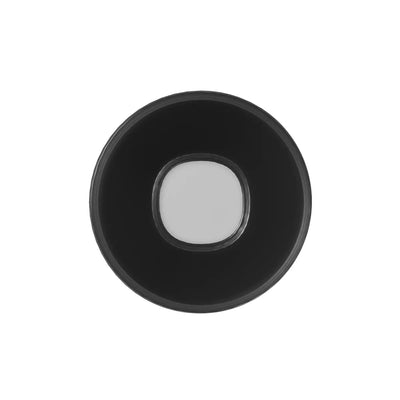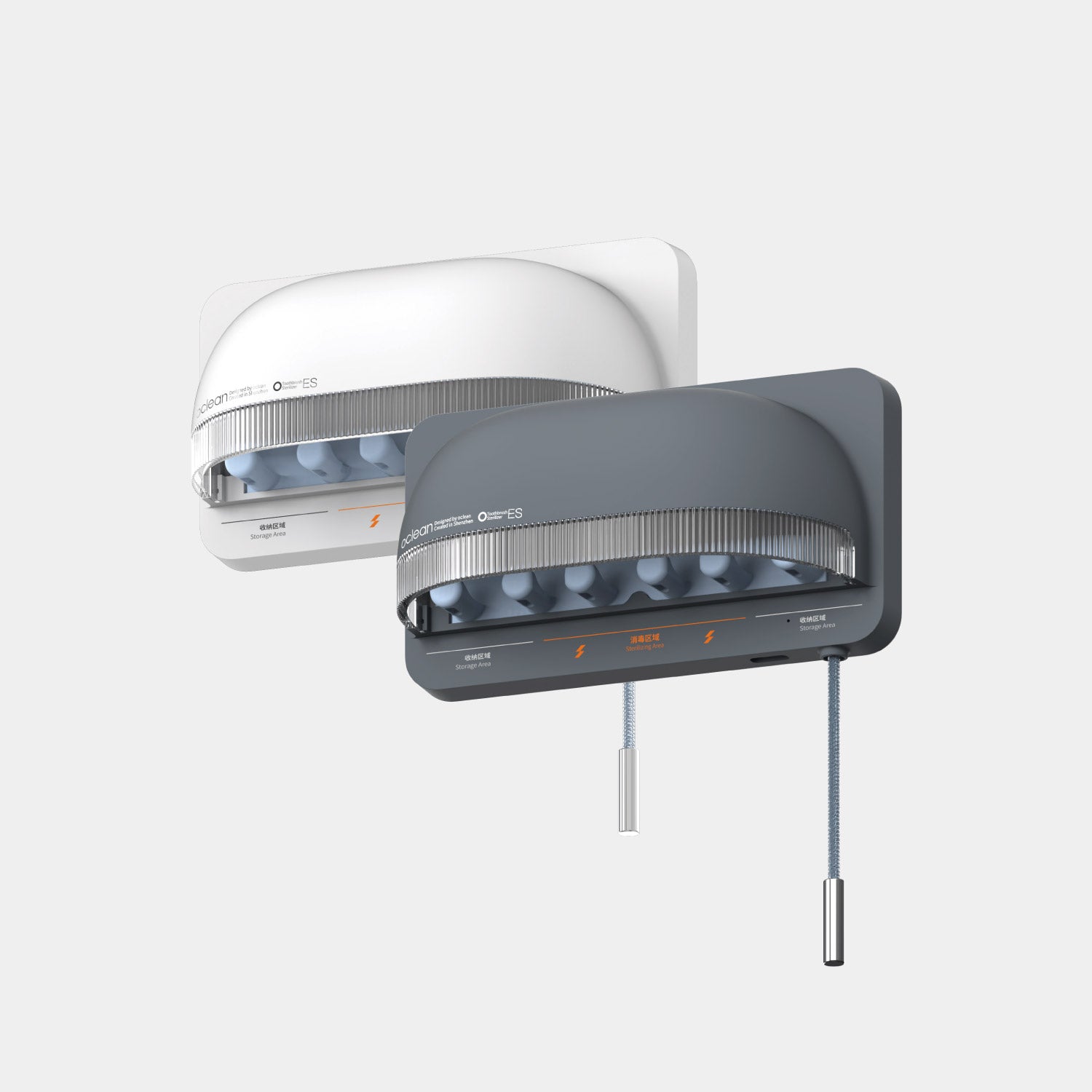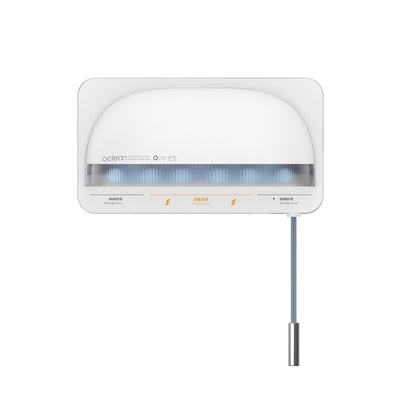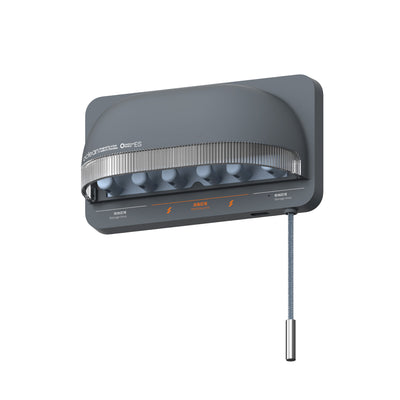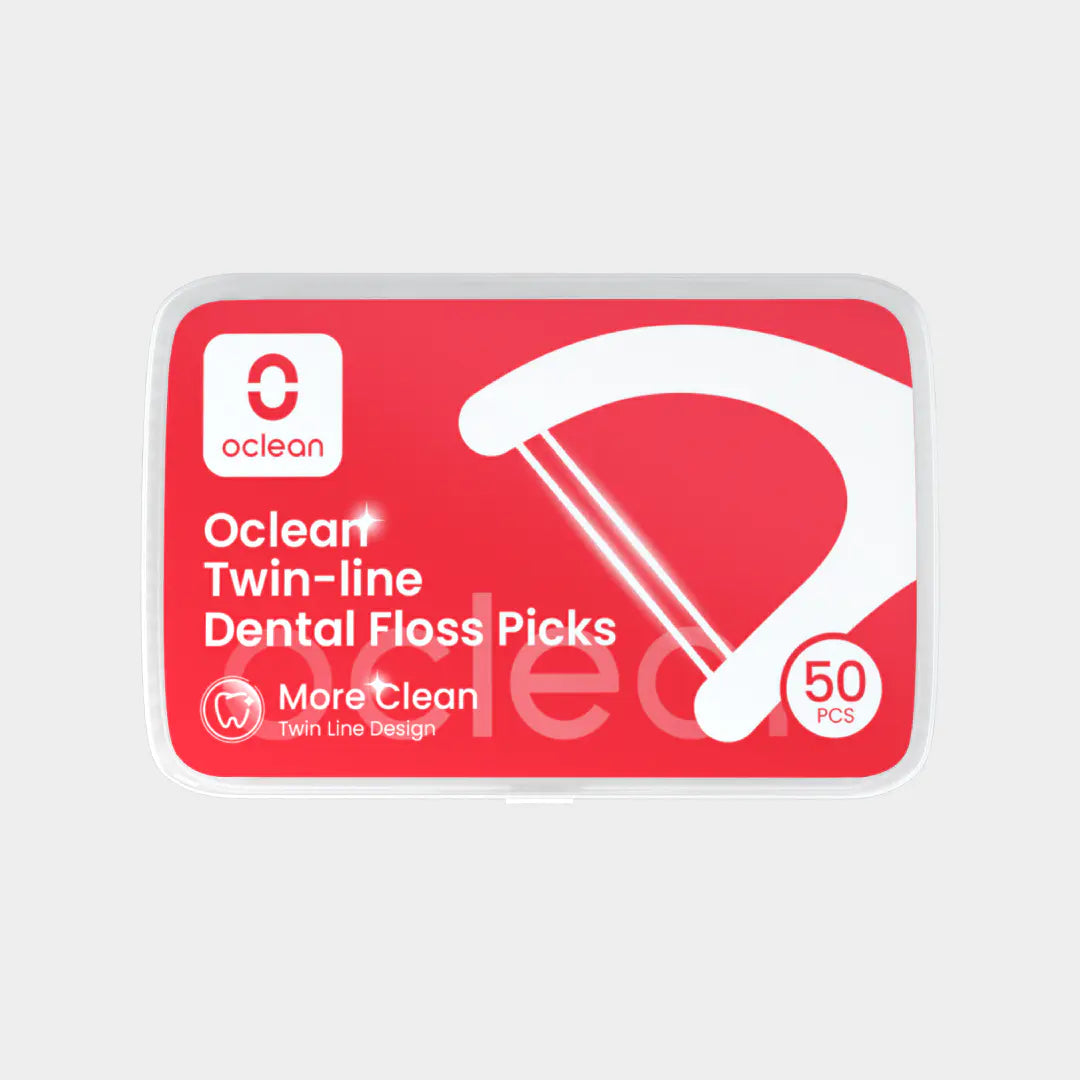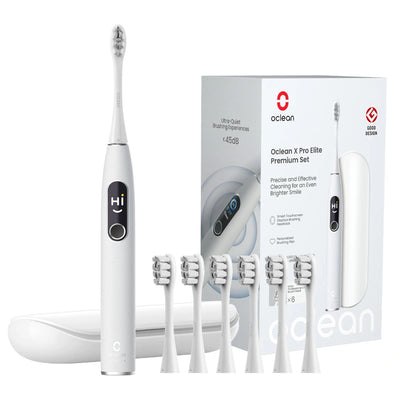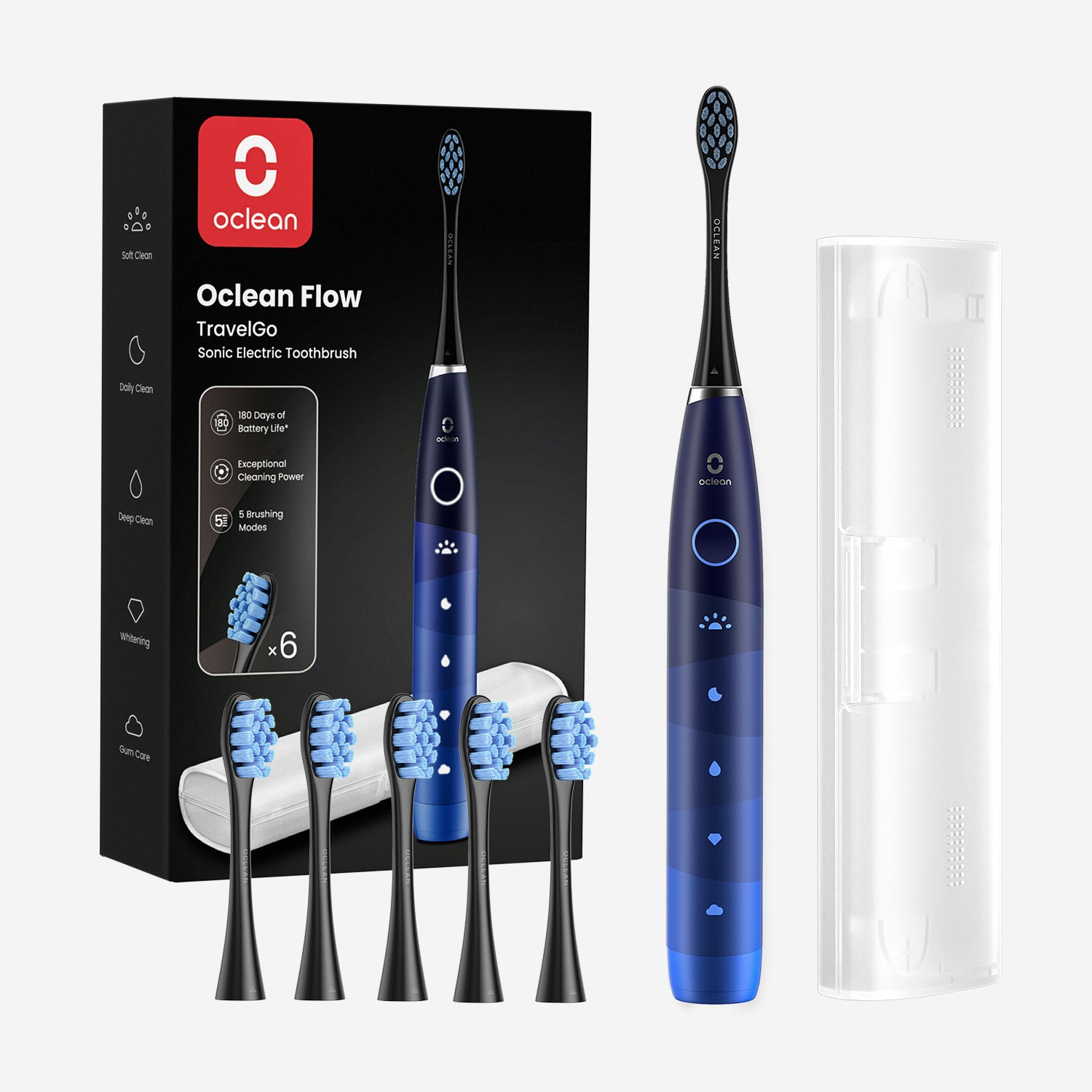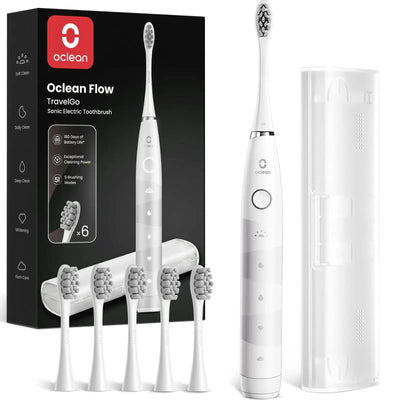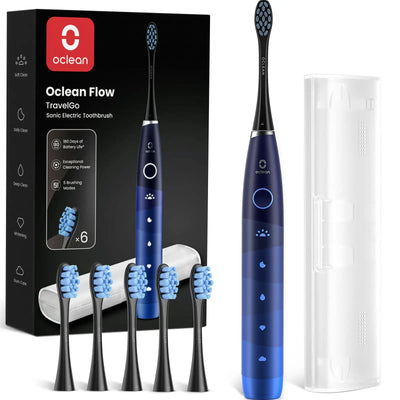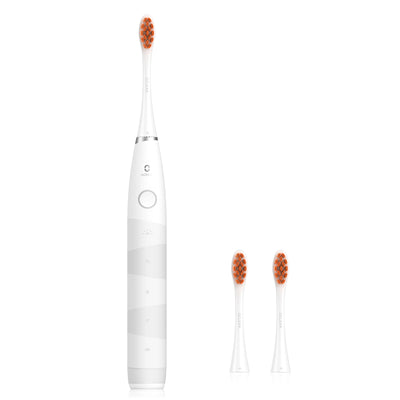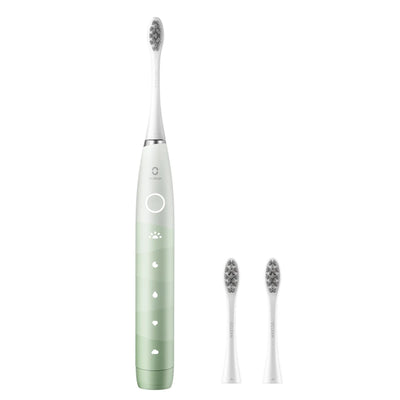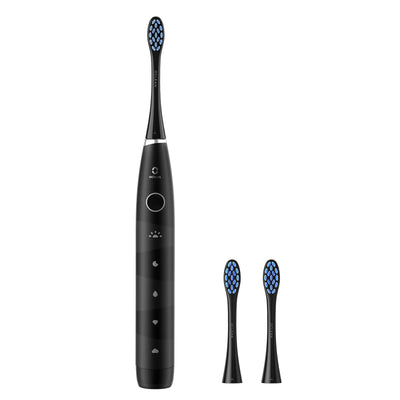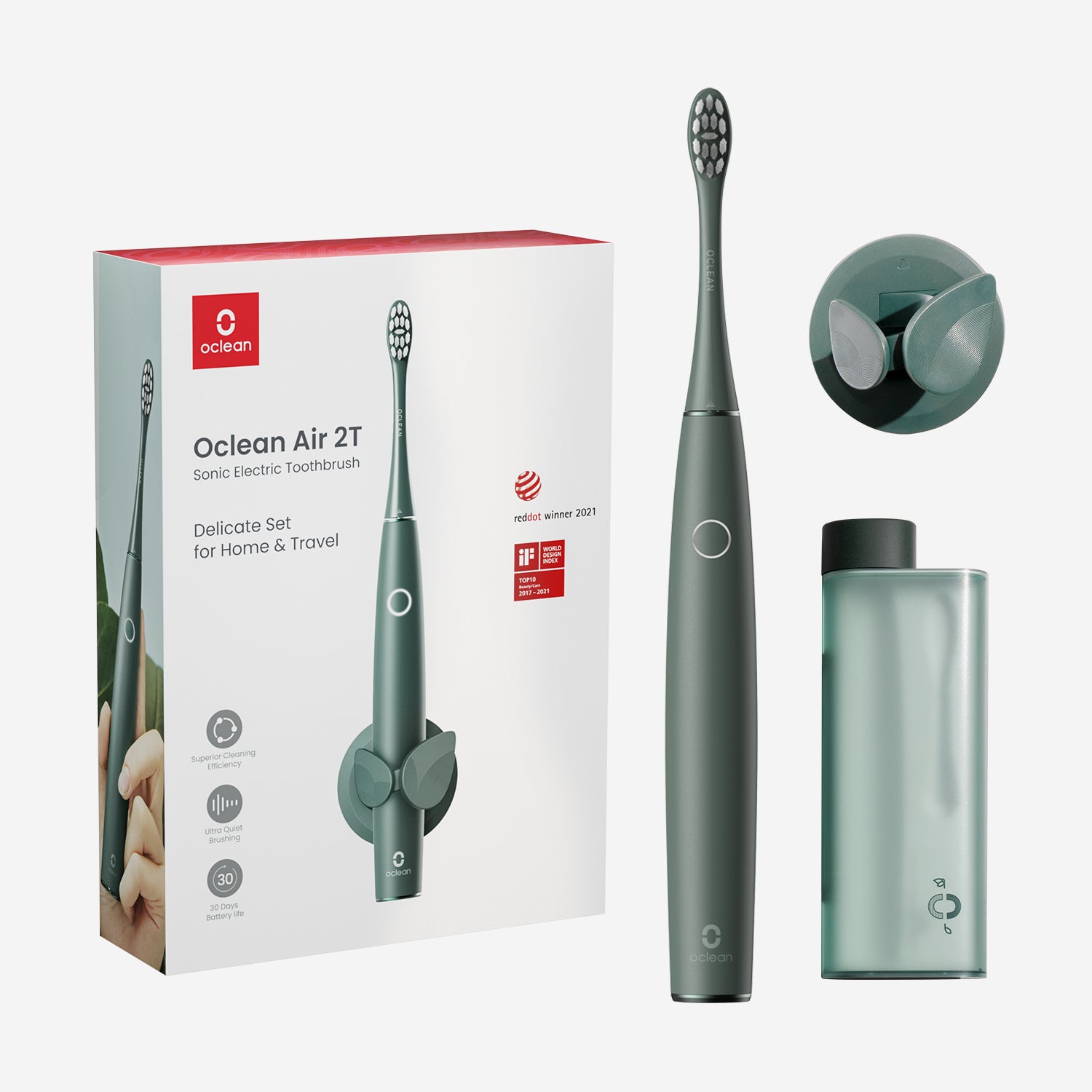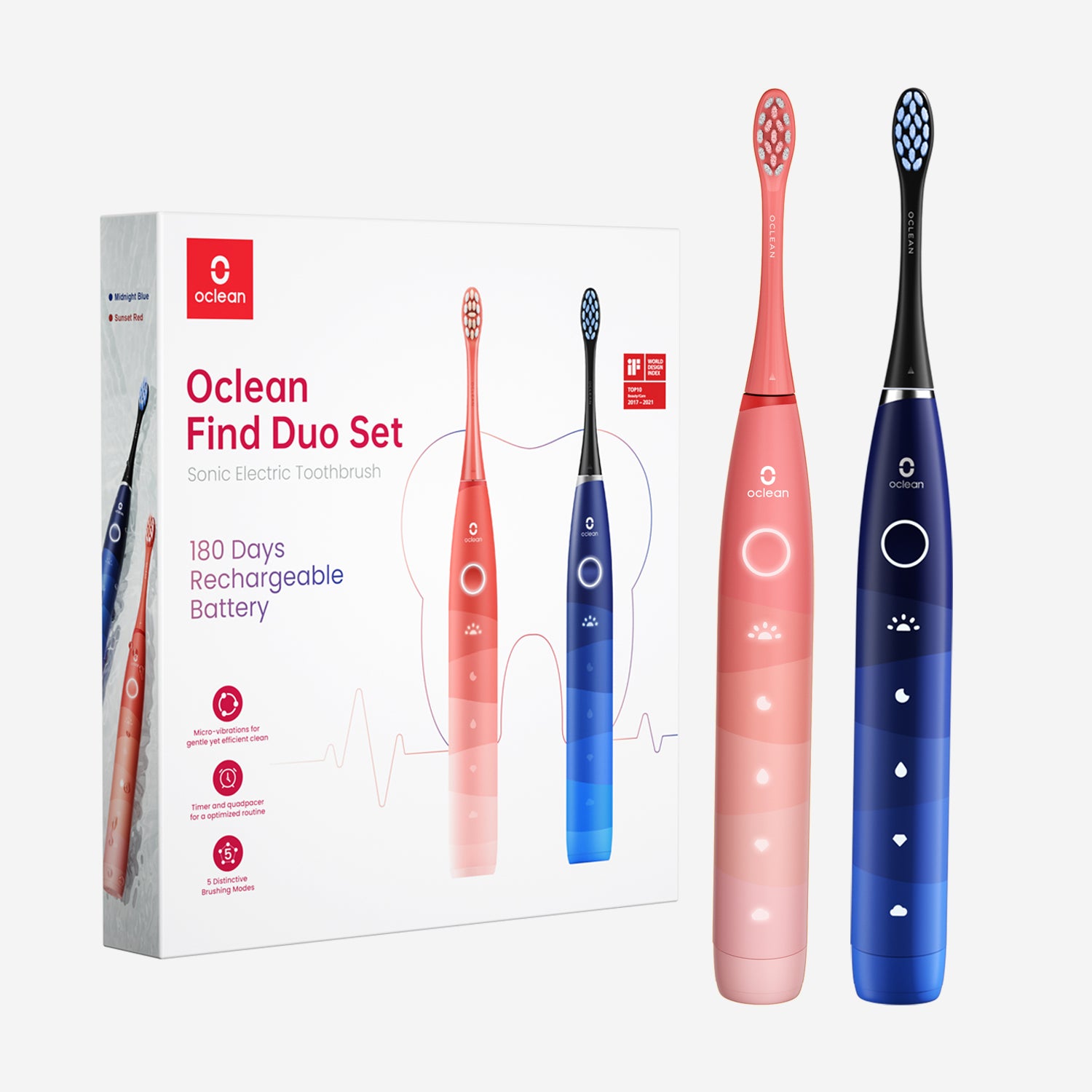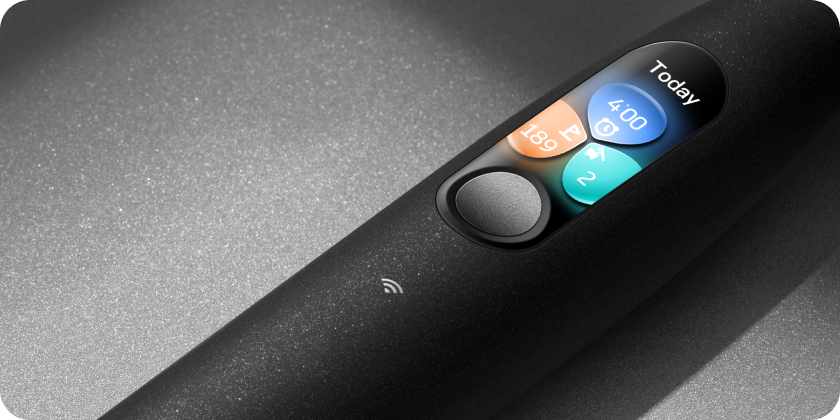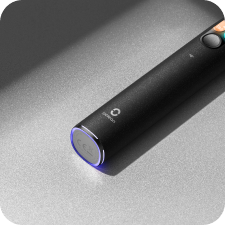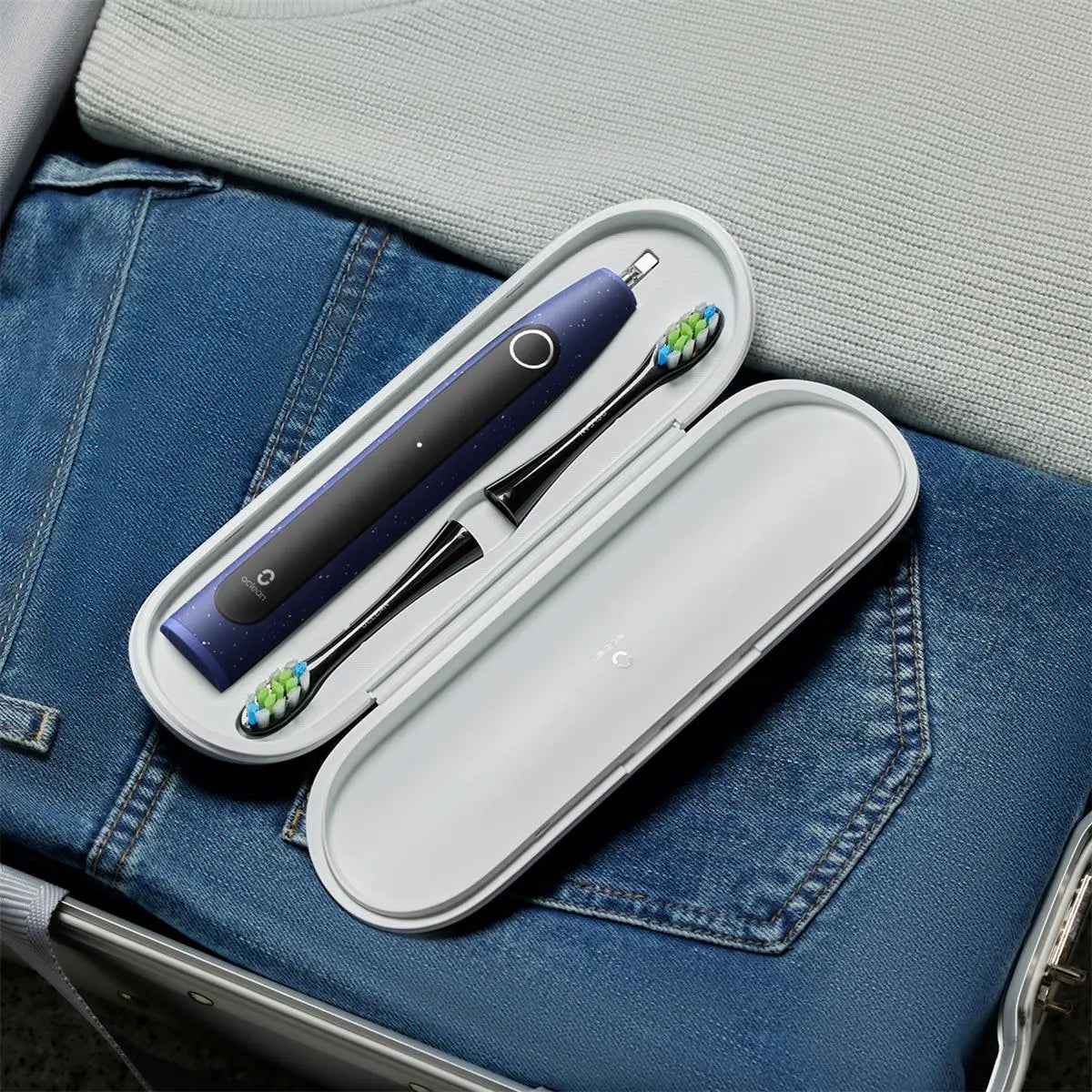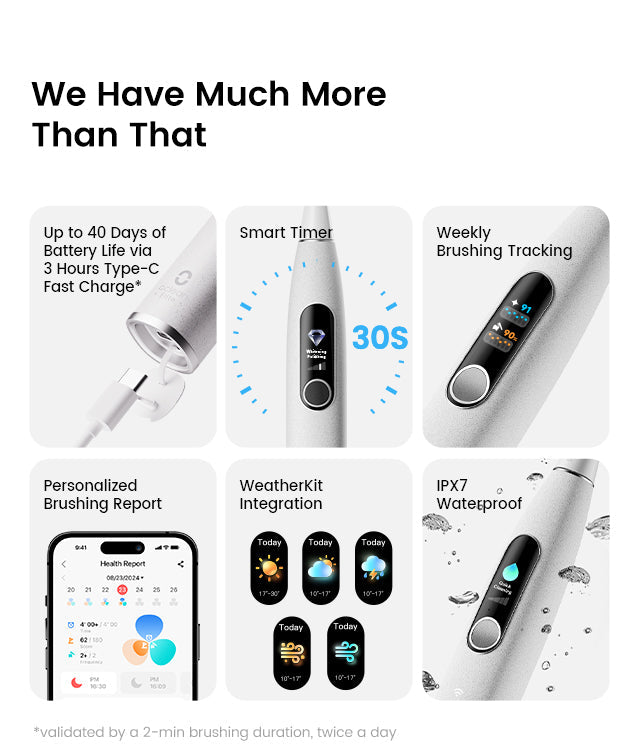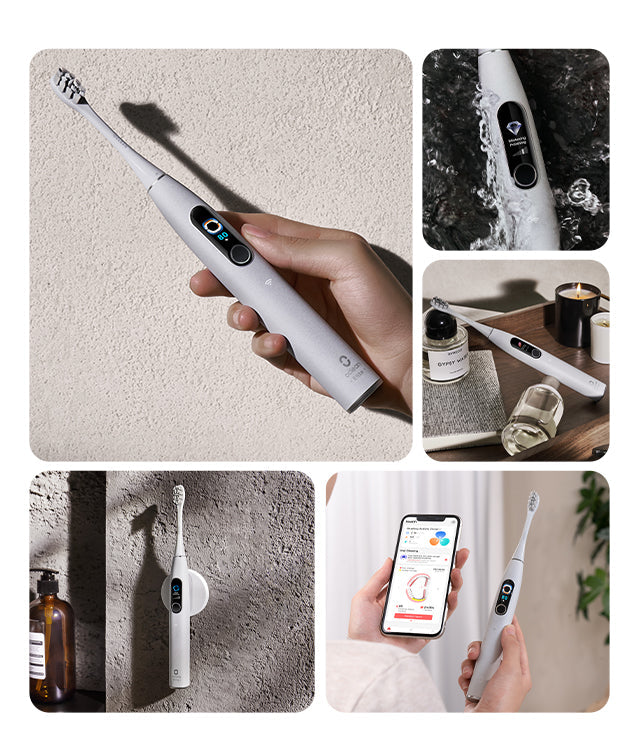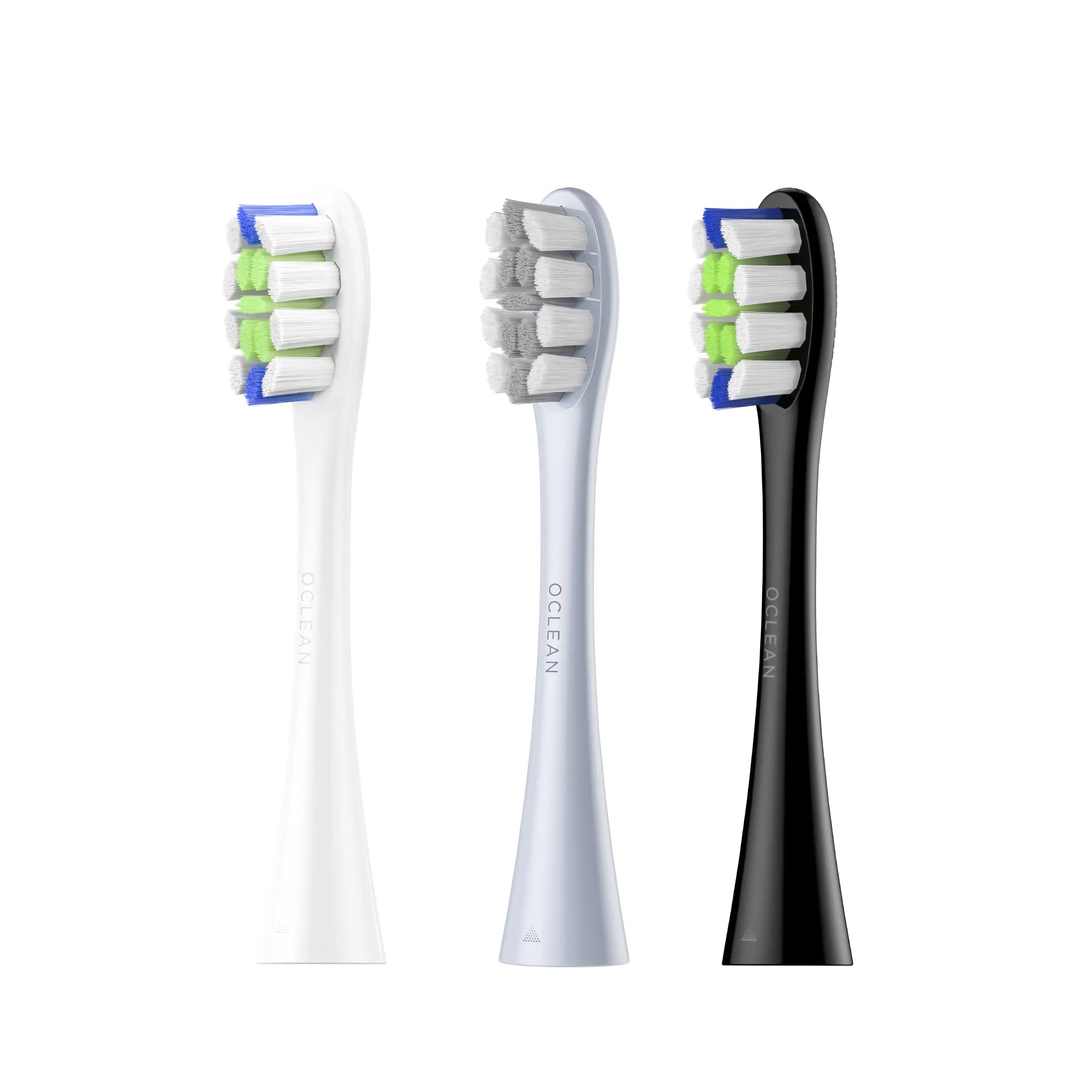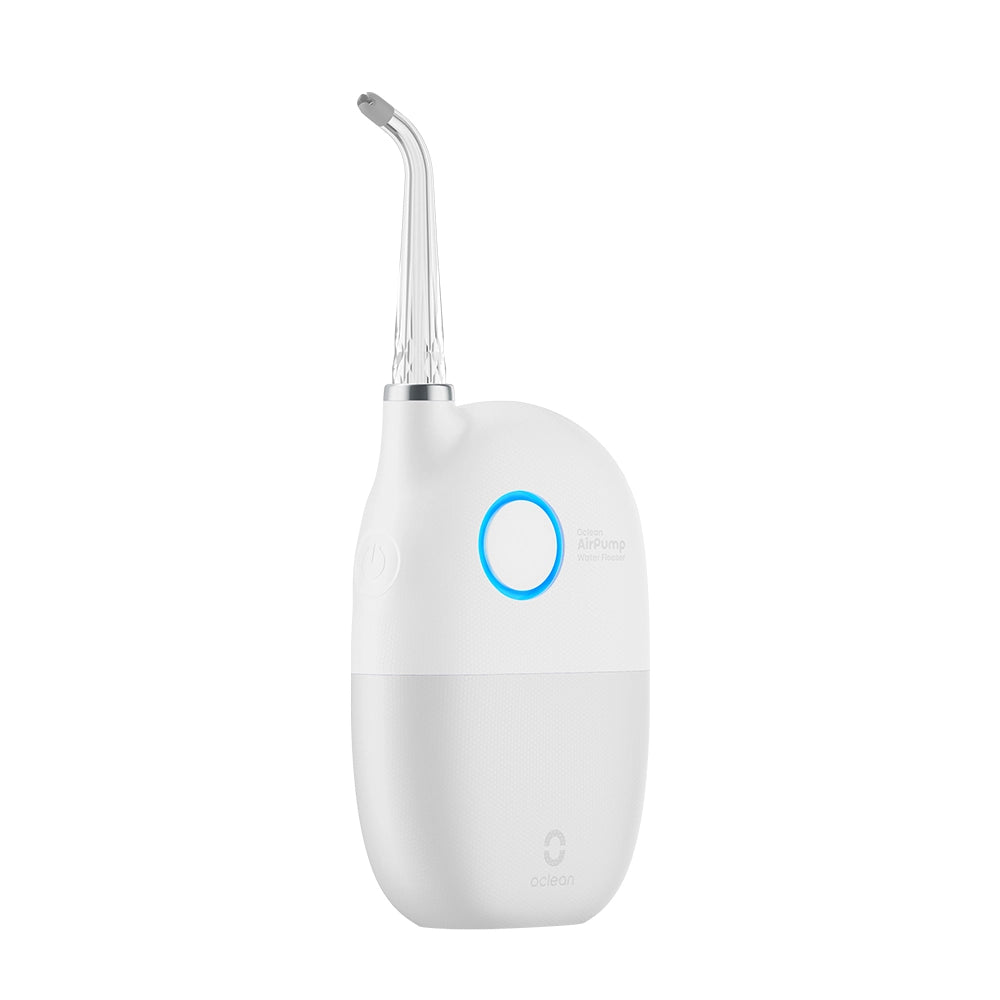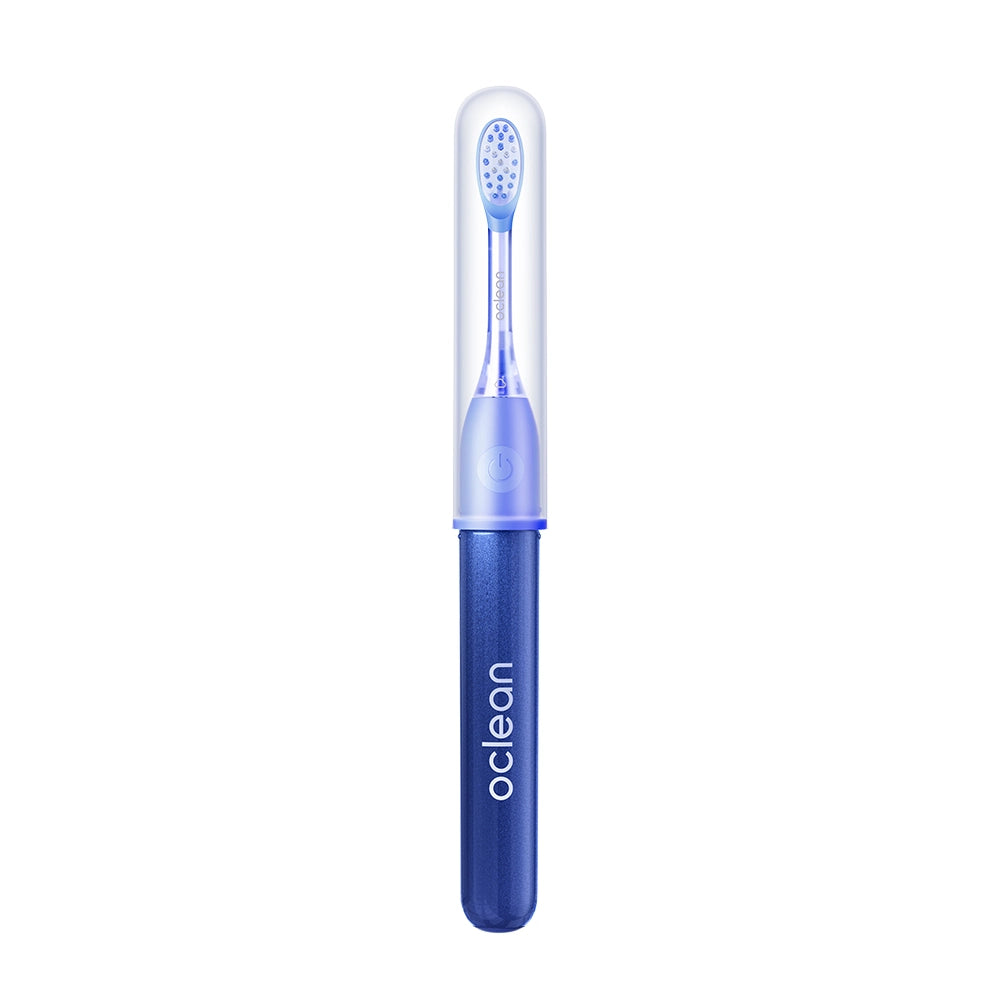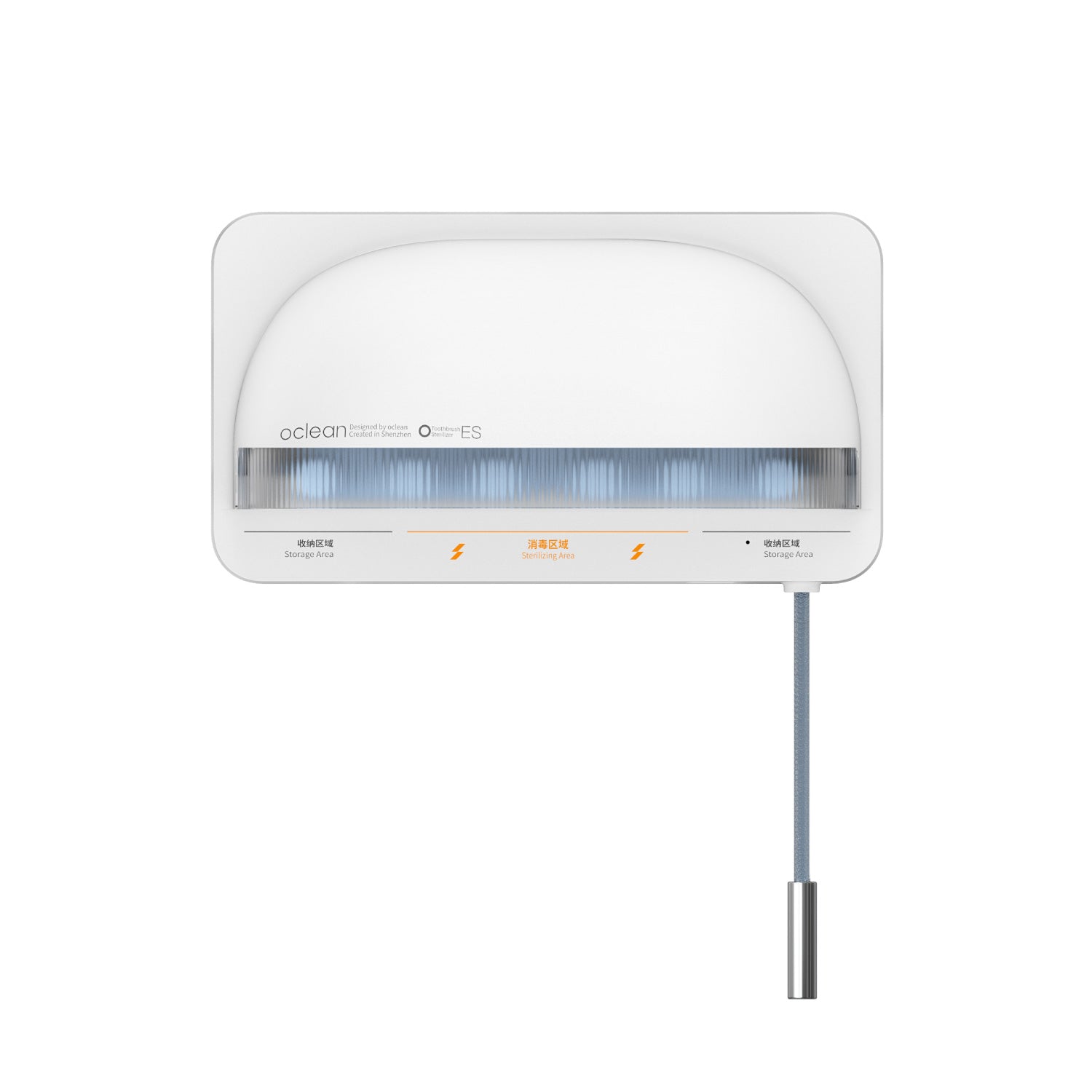Whenever you’re sick, your toothbrush becomes contaminated with all the germs and bacteria in your mouth. That might cause you to think twice before you use it again. But should you replace your toothbrush? Or is it okay to use after an infection?
Strep throat is a bacterial infection caused by Group A Streptococcus (GAS). It primarily affects the throat and tonsils, causing a fever, sore throat, and swollen lymph nodes. It’s highly infectious and is rapidly spread via respiratory droplets.

However, if you’ve already had the infection, you can’t get it again – at least, not the same strain. So, is there any risk from reusing the same toothbrush? Or put another way, when should you change your toothbrush after a strep infection? Let’s find out.
When to Change Your Toothbrush After Strep
Usually, we recommend changing your toothbrush (or toothbrush head) every three to four months. Look for clear signs of bristle wear.
But is the same true after an infection?
If you’ve recently had or are developing strep throat, you may want to change it sooner. Follow these guidelines:
· Immediately After Diagnosis. Just been diagnosed? If so, you might want to consider swapping out your toothbrush. This prevents the reintroduction of the bacteria, which can prolong the condition.
· After Illness. If you’ve started getting better (or just started on antibiotics), you might want to use a fresh brush. Why? Well, this minimises the risk of reinfection as your body begins to heal.
· Someone Else is Sick. What about if another family member is sick? If your toothbrush has come into contact with theirs, it’s sensible to replace your toothbrush head. There’s a high chance that a toothbrush can become contaminated from respiratory droplets.
The last point is a crucial one. We recommend keeping the toothbrushes separate for the duration of the illness. Practice smart infection control, and don’t let anything you put in your mouth be contaminated.
What About Electric Toothbrush Heads?
People often aren’t sure if they should treat an electric toothbrush head differently from a manual toothbrush.
Let’s be clear: when we say replace your toothbrush, we mean the head – not the entire brush. We recommend following the same rules for replaceable heads as you would for an entire manual toothbrush.
What about the rest of the brush? You should clean the entire base using a disinfectant wipe. Remember to clean any crevices where bacteria can lurk. Avoid submerging the battery or any motorised components, as this can permanently damage the toothbrush.
Do Germs Stay on Your Toothbrush?
In short, yes.
When you’re sick – whether it’s strep throat or the flu – your toothbrush becomes contaminated by any bacteria or viruses you might be harbouring. Depending on the species, these microorganisms can stick around for several days.
Just remember, during the COVID-19 pandemic, when people worried about getting infected from door handles and other objects. The logic is the same.
That being said, it’s not always as risky as we might think.
According to a 2013 analysis, toothbrushes used by children who had strep throat didn’t grow more bacteria than any others. So, unless your immune system is severely compromised, you’re unlikely to get sick. Your white blood cells are strong enough to fight off any infection.
Still, there’s no harm in swapping out a toothbrush just to be safe. That’s especially true for cold sores, where there is a genuine risk of infection, which will never truly go away.
How Long Can Strep Bacteria Survive on a Toothbrush?
Streptococcus bacteria are incredibly hardy. Millennia of evolution allow them to survive for days in moist, damp environments.
But how long can they last on your toothbrush?
On average, Group A Streptococcus can survive on dry surfaces for up to 48 hours. However, if the surface is moist or damp – as toothbrush bristles often are – the bacteria might persist up to 72 hours. The higher the temperature and humidity, the longer it can survive.
Compared to other pathogens:
· Influenza viruses generally survive on toothbrush bristles for a few hours to a day, depending on the material.
· Rhinoviruses (which cause the common cold) can persist on hard, non-porous surfaces for up to 24 hours, but much less on soft bristles.
· SARS-CoV-2, the virus responsible for COVID-19, has been shown to survive on plastic for up to 72 hours, though viral load decreases rapidly over time.
· Candida (a common fungal pathogen) may persist for several days, especially in damp environments like bathrooms.
The overall risk of infection (or reinfection) from a contaminated toothbrush is relatively low for healthy individuals. Regardless, it’s still wise to replace or disinfect your toothbrush after a bacterial infection.
Why Bacteria on a Toothbrush Matters
Bacteria are everywhere – they’re on your skin, clothes, hair, and in between your teeth. You might wonder what the fuss is all about. Surely, a little bit of bacteria won’t cause you any harm?
That’s somewhat true.
However, your toothbrush can act as a reservoir for bacteria, allowing harmful bugs to grow. When you put this into your mouth, you can damage your oral and overall health. Here’s how:
· Increase Risk of Infection. Common sense says that introducing bacteria into your mouth increases the risk of infection. You could give yourself another case of strep throat, or other bacteria can infect your gums. That’s why it’s crucial to disinfect your brush occasionally.
· Possible Transfer to Dental Devices. Your toothbrush might not grow strep throat successfully. However, if you let it grow unimpeded, it could transfer to retainers and mouthguards. These devices sit in your mouth for longer periods, significantly increasing the risk of infection.
· Bacteria Grow in Moist Environments. Bacteria thrive wherever there is moisture. Your toothbrush is a damp, moist environment for most of the day. Sure, it might dry off a little after you use it – but it remains wet for hours. Always give it a good shake to remove any excess water after use.
When you’ve finished with your toothbrush, always store it upright and allow it to air dry. Often, people leave toothbrushes lying on their side or store them in a toiletry bag.
The problem? The toothbrush stays moist for longer, allowing bacteria to proliferate. Air drying in a sunny room helps disinfect the toothbrush and prevent bacterial growth.
Should You Disinfect Your Toothbrush After Strep Throat?
Nobody wants to throw away a perfectly good toothbrush. If you’ve just added a new head to your brush, you might consider disinfecting it.
Is this a good idea?
Yes and no. There’s no doubt that disinfecting your toothbrush will kill the bacteria and viruses. Don’t use household disinfectants, however – they’re dangerous for human health. We recommend washing your toothbrush head in a saline solution for best results. You can also use chlorhexidine.
One study found that ultraviolet (UV) rays are more effective than saline or chlorhexidine at disinfecting a toothbrush. So, you might just want to leave it out in the sunlight.
When It’s Essential to Replace Your Toothbrush
Strep throat isn’t the only time it’s sensible to swap out your old toothbrush. As with anything you put in your mouth, it’s best to have stringent hygiene rules. Swap your toothbrush:
· After Any Oral Infection. Strep throat is just one kind of oral infection. If you’ve had a cold sore, tonsillitis, or any other oral infection, we recommend using a new toothbrush or toothbrush head. Don’t take any chances – especially where cold sores are concerned.
· After Antibiotic Treatment. Once you’re feeling better and recovered, minimise the risk of reinfection by starting fresh. You might want to disinfect the toothbrush during the infection to save money. Then, you can swap it out when you’re feeling better.
· You Dropped Your Toothbrush on the Floor. Too many people drop their toothbrush and then use it. Yuck! Always replace it, as you don’t know what you’re putting in your mouth. If that’s not possible, don’t just rinse it – disinfect it. Use a strong saline solution.
· If Someone Else Used It. Sharing toothbrushes is a recipe for infection. You’re likely to get viruses such as the common cold, flu, herpes (cold sores), or the Epstein-Barr virus. Other infections, like strep, hepatitis B, or hepatitis C, are also passed via contaminated saliva.
Final Thoughts
Changing your toothbrush after a strep infection isn’t just smart – it’s hygienic. Your toothbrush is a repository for bacteria. Given that strep can last for up to 72 hours on a toothbrush, you should always swap it out for a new one.
Don’t risk reinfection.
Oclean offers affordable replacement heads for all our electric toothbrushes – delivered quickly to your door. Browse our collection today and keep your oral health protected.
Table of Contents
